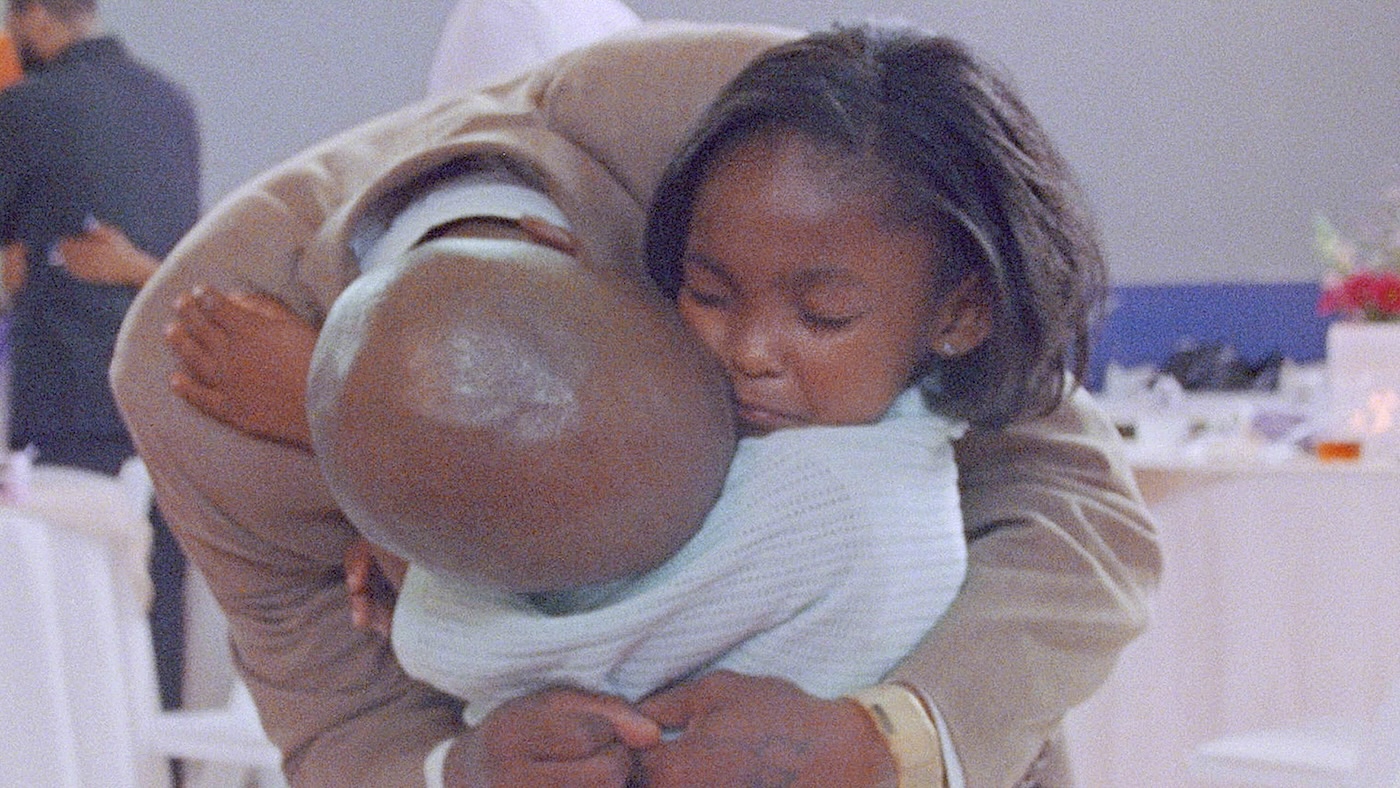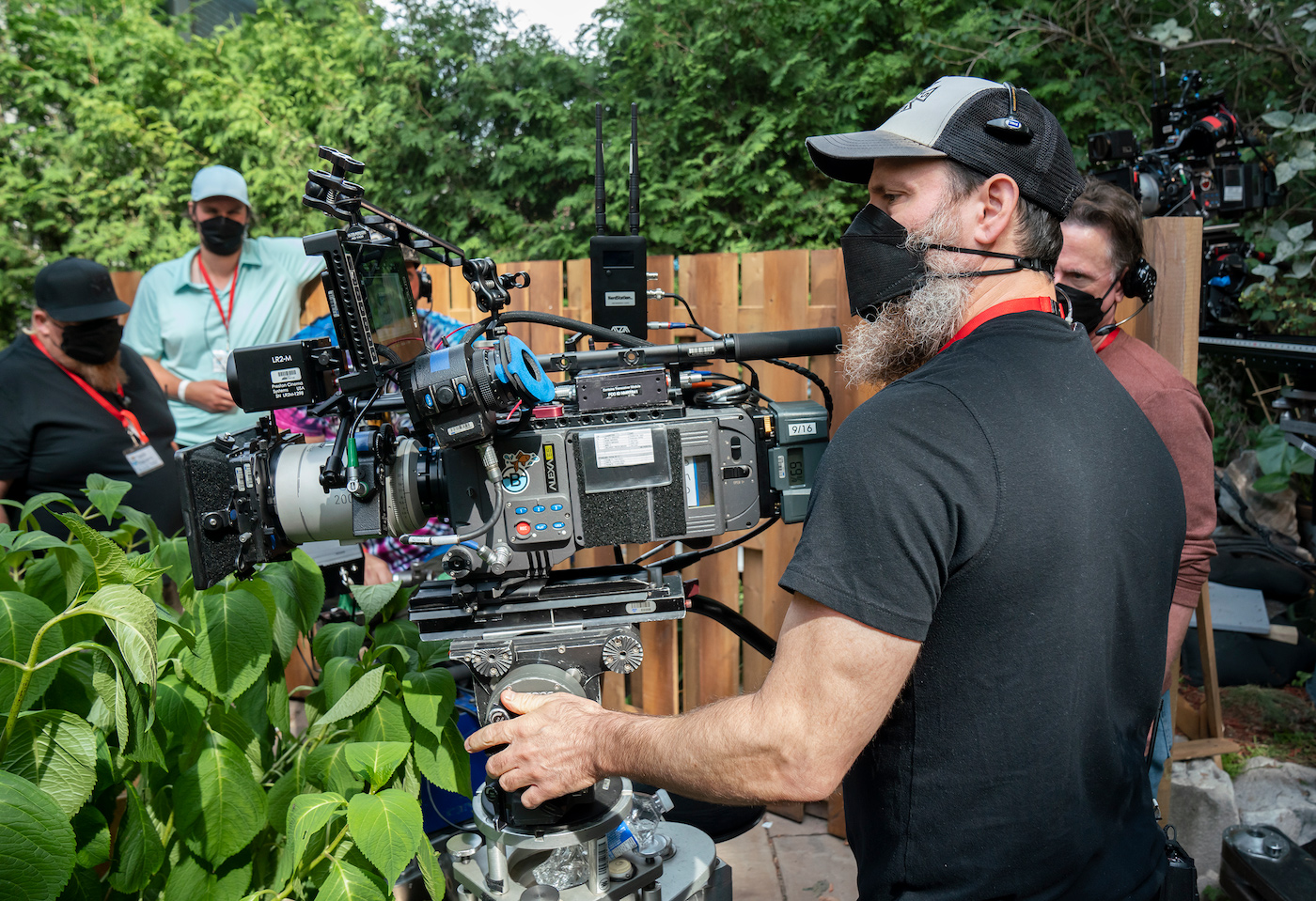Local 600 camera teams head up to Park City with stories of reconciliation, remembrance, and renewal to unpack.
by David Geffner / Photos Courtesy of Sundance Institute Unless Otherwise Noted
It’s been a tough few years for the U.S. film and television industry, under siege from everything from a global pandemic to gun-safety violations on set that brought horrific consequences, to work stoppages and more. So it’s not surprising that many of the stories at Sundance 2024, the 40th edition of this venerable indie film festival, revolve around reconciling with and moving through past traumas. Leading that charge is a Dramatic Competition entry from Oscar-shortlisted filmmaker and celebrated painter Titus Kaphar, whose feature film Exhibiting Forgiveness centers precisely on those themes. Shot by Lachlan Milne, ASC, ACS, NZCS, whose last visit to Park City was for the premiere of the gorgeously shot Minari (winner of both the Dramatic Grand Prize and Audience Award), Kaphar’s film is a compelling meditation on the power of forgiveness. Shooting the project was also a transcendent experience for Milne, who says “making a movie with a painter was something I’d never done, but it ended up being one of the great collaborations of my career. Talking about color, framing and coverage from the perspective of a painting on a wall taught me a lot.”
Life lessons were also garnered by Local 600 Director of Photography Laela Kilbourn, whose upcoming Girls State marks her eighth documentary feature premiere at Sundance. Kilbourn was one of seven cinematographers tasked with following one of the hundreds of teenagers who make up Co-Directors Amanda McBaine and Jesse Moss’ companion feature to Boys State (which won the Documentary Grand Jury Prize at Sundance 2020). In Girls State, viewers are put inside the world of youth politics, as the female teens attempt to build a representative government in the state of Missouri that includes running for governor and Supreme Court seats and presiding over a reproductive-rights case while the real-life overturning of Roe v. Wade hung in the balance. Kilbourn says filming Girls State “was complex and exhilarating. Seven DP’s [were] working simultaneously and independently yet meshing as a team, incorporating our separate creative decisions in real time, all captained by Amanda and Jesse. I was privileged to witness my assigned girl’s journey – she was smart, motivated, focused; wrestling with social, political, and systemic issues alongside other girls she was encountering for the first time; and she was very much engaged in the process. To see young women who have it within themselves to make a serious impact on the nature of our democratic experience was to feel a cautious measure of hope.”
Hope, couched within the bleakest of human circumstances, is also at the heart of another compelling nonfiction feature, Daughters, shot by ICG Director of Photography Michael “Cambio” Fernandez. The film follows four young girls preparing for a special Daddy Daughter Dance with their fathers, who are incarcerated in a Washington, D.C. jail. Cambio employed a vérité style, noting that “shooting on film for the dance portion” was probably his most challenging task. “You only get one take to get everything, from exposure to camera movements, correct,” he shares. “We had to be there but also be soft and loving in our approach, since the moment between the fathers and daughters was so important. It took a long time filming the families to get them comfortable with my proximity to them.”
(Note: this article was compiled with information supplied by Local 600 members prior to the start of the festival. We are not responsible for the omission of films and crewmember names not provided to www.icgmagazine.com by posting date.)
U.S. Dramatic Competition
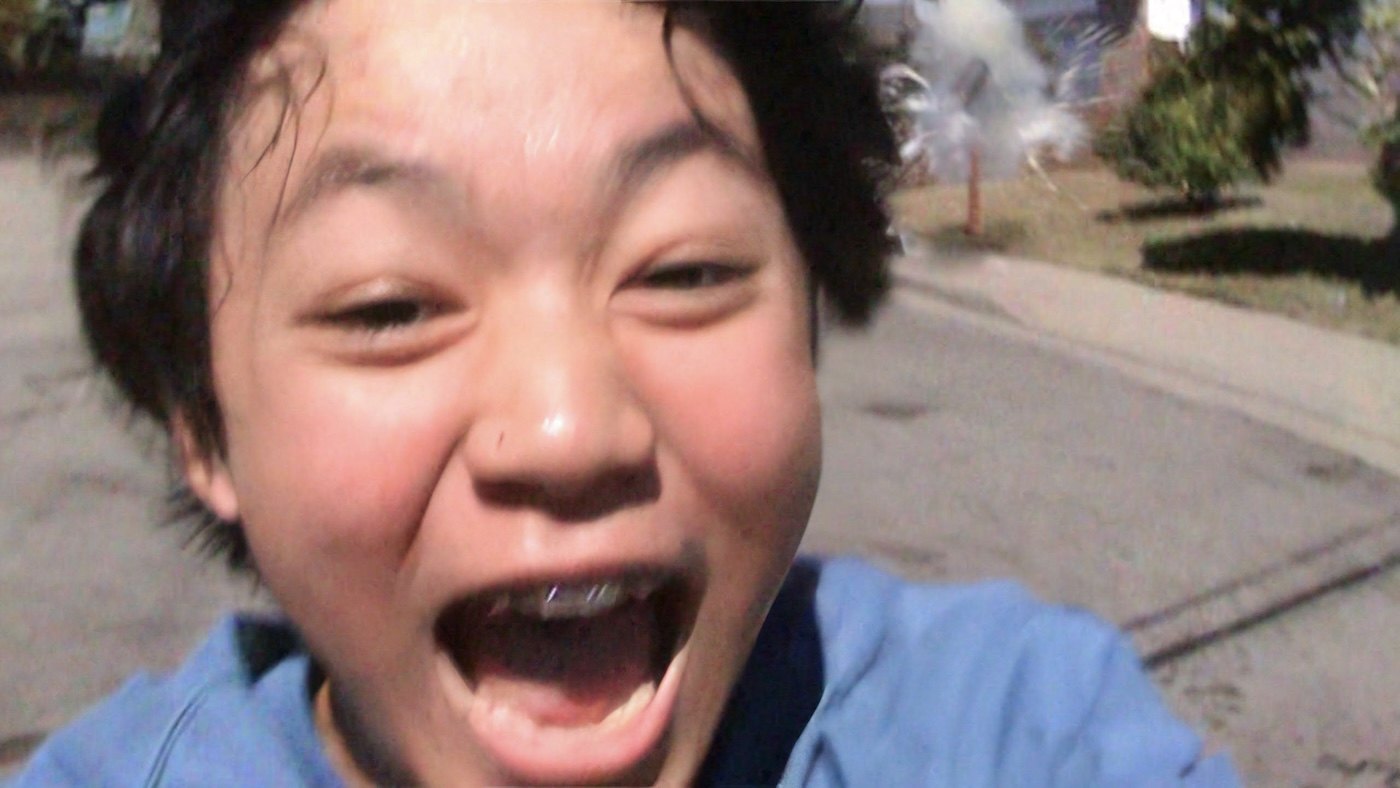
Dìdi (弟弟) – Guild DP Sam Davis shot this loving (and kinetic) ode to adolescence in the story of an impressionable 13-year-old Taiwanese American boy learning, in his last summer before high school, what his family can’t teach him: how to skate, how to flirt, and how to love your mom. First-time feature director (and Google Creative Lab 5 alumnus) Sean Wang mines personal experience in this film about first-generation teenagers navigating the beauty and pain of cultural heritage in a sea of conformity. Wang guides viewers through the freewheeling early days of social media, where AIM emoticons and MySpace rankings carry the weight of heartbreak and friendships forged and broken.
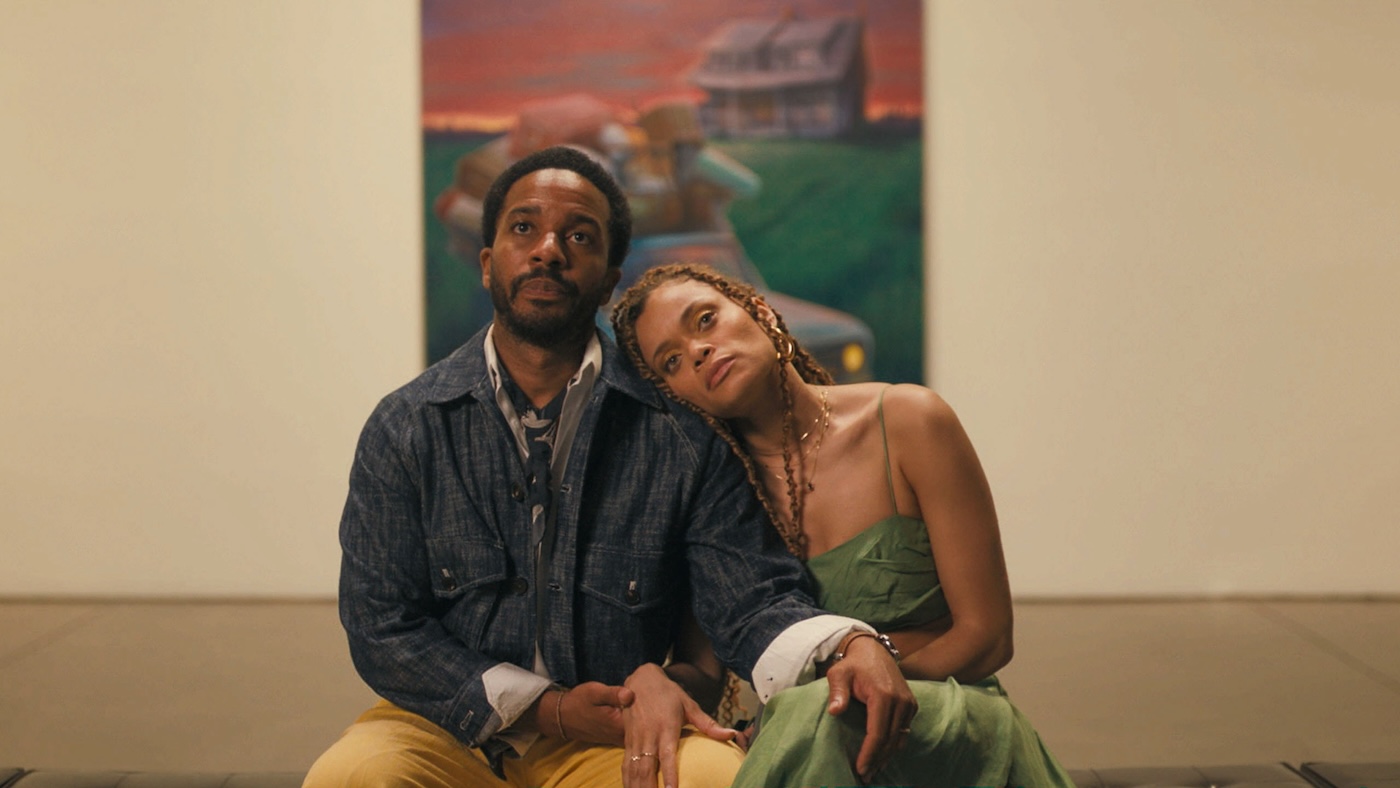
Exhibiting Forgiveness – Guild Director of Photography Lachlan Milne, ASC, ACS, NZCS [ICG Magazine December 2023], returns to Park City after his critically acclaimed (and Oscar-nominated) indie feature, Minari, won both the Dramatic Competition Grand Prize and the Audience Award at the 2020 festival. Working with Oscar-shortlisted filmmaker and celebrated painter Titus Kaphar, Milne helped visualize the story of Tarrell (André Holland), a Black art star reckoning with his own traumatic childhood by creating powerful and transcendent paintings. On the path to success, Tarrell is derailed by an unexpected visit from his estranged father, a recovering addict desperate to reconcile. Milne says the film is about breaking patterns and about the fine art world, but above all else, it is about family. “Making a movie with a painter was something I’d never done, but it ended up being one of the great collaborations of my career,” he reflects. “Talking about color, framing and coverage from the perspective of a painting on a wall taught me a lot. We shot mostly single camera (which I always love) with a fantastic Local 600 crew in the baking New Jersey summer of 2023. I’m so very grateful for this project.” Milne’s full union team included Camera Operator Ben Spaner (benspaner.com) 1st AC Adriana Brunetto-Lipman, 2nd AC Donny Gamble, DIT Caleb Murphy, Loader Raffaele DiLullo and Unit Still Photographer Sarah Shatz. Chris Reynolds was an additional 1st AC and Matt Albano was an additional 2nd AC.

Love Me – Guild Director of Photography Germain McMicking (True Detective Season 3) shot this debut feature for Topanga, CA-based filmmakers Sam and Andy Zuchero. This wildly imaginative story tells the “love story” of a smart buoy and an orbiting satellite that spans a billion years and probes the mysteries of being and consciousness. Love Me’s whimsically shape-shifting structure weaves together the real, the virtual, and the surreal in its tale of star-crossed, web-paired metallic protagonists – inhabited in different forms by Kristen Stewart and Steven Yeun – who awkwardly navigate romance and companionship, equipped only with untold petabytes of archived web data, social media and online videos. They yearn to understand who they are, whether their feelings are real, and even if they are real.
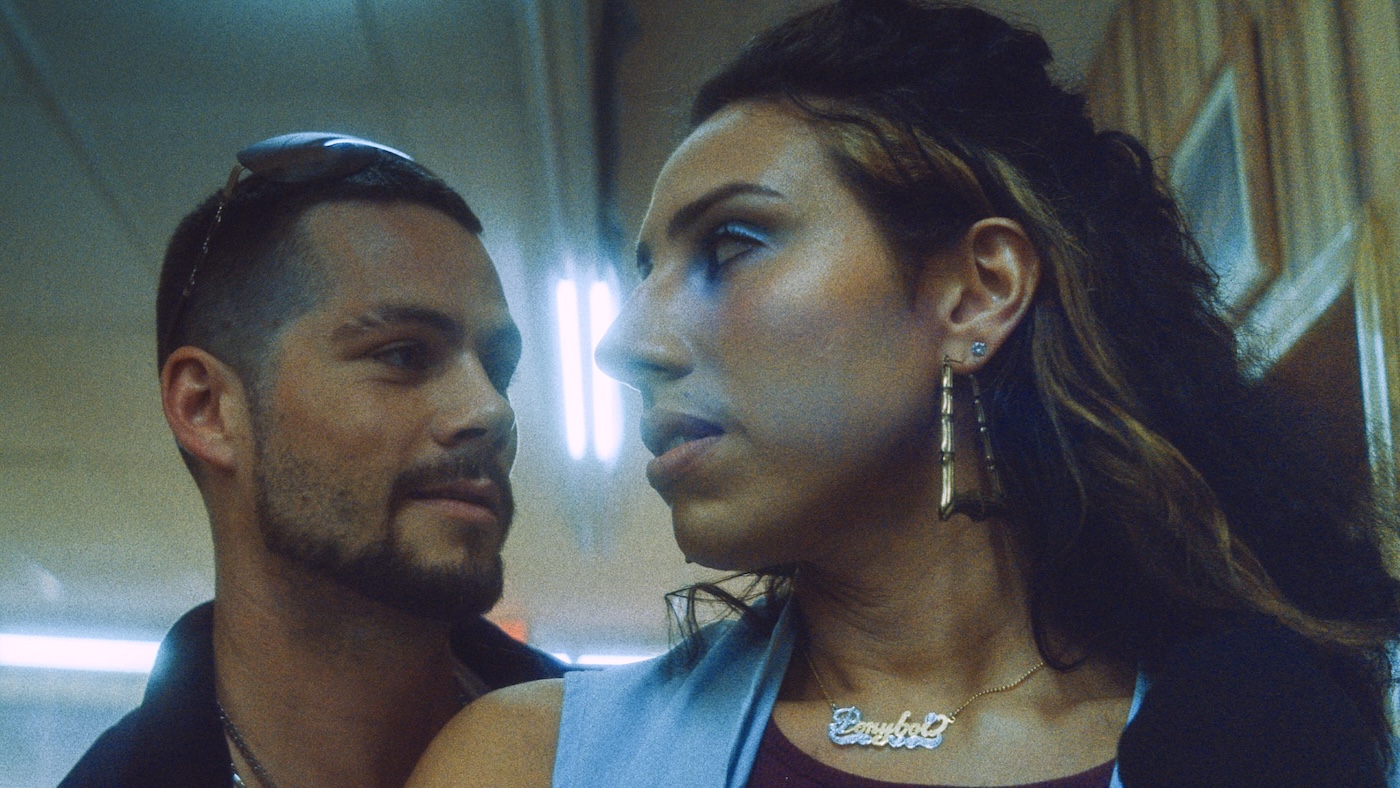
Ponyboi – Director Esteban Arango and Guild DP Ed Wu return to the Sundance Film Festival after Arango’s feature film, Blast Beat [ICG Magazine January 2020], screened at the 2020 festival. Ponyboi unfurls throughout Valentine’s Day in New Jersey, as a young sex worker must run from the mob (and his past) after a drug deal goes sideways. Wu describes Ponyboi as “a unique experience from the beginning. The script combines an eclectic collection of genres that wouldn’t normally fit together: LGBTQ+ drama, thriller, surrealism, mobster and romance films,” he shares. “Yet somehow … they meshed perfectly. Just like the mashup of genres, the character Ponyboi and the backdrop of industrial New Jersey are in a constant struggle with their duality of grit and beauty and masculinity and femininity.” Joining Wu on the ICG camera team were A-Camera/Steadicam Operator Ben Spaner, 1st AC Bryant Bailey, 2nd AC Alejandro Lazare, Loader Sam Shoemaker and DIT Michael Ashley.
Wu says he and Arango used the above themes as a bed to anchor the film’s visuals. “With this being our second film together,” Wu continues, “we knew we wanted to push the loud and bombastic style we established in Blast Beat and ground it with a genuine sincerity to the portrayal of the characters. To showcase this in the cinematography, we decided to shoot anamorphic on Atlas Orions with a white Pro-Mist 1/4 in front of the lens. It was a happy accident when the rental house gave us white instead of black Pro-Mist to test with. We used Lensbaby, step printing, lyrical light cues, and more to emphasize the surreal sensations that Ponyboi has gone through his entire life. We used bold, vibrant colors lit by [Chief Lighting Technician] Sean Soto and [Key Grip] Rob Stile that were beautifully elevated by our colorist Kath Raisch to heighten the danger and tenderness of each moment. We almost always used the Sony VENICE’s high ISO mode in every night exterior, which allowed us to showcase the New Jersey streets and bridges while keeping our lighting package slim. Ponyboi was a special film where we fought tirelessly to push every penny of the budget and time to bring this vibrant visual story to life.” The Local 600 camera crew included A-Camera/Steadicam Operator Ben Spaner, 1st AC Bryant Bailey, 2nd AC Alejandro Lazare, Loader Sam Shoemaker and DIT Michael Ashley.
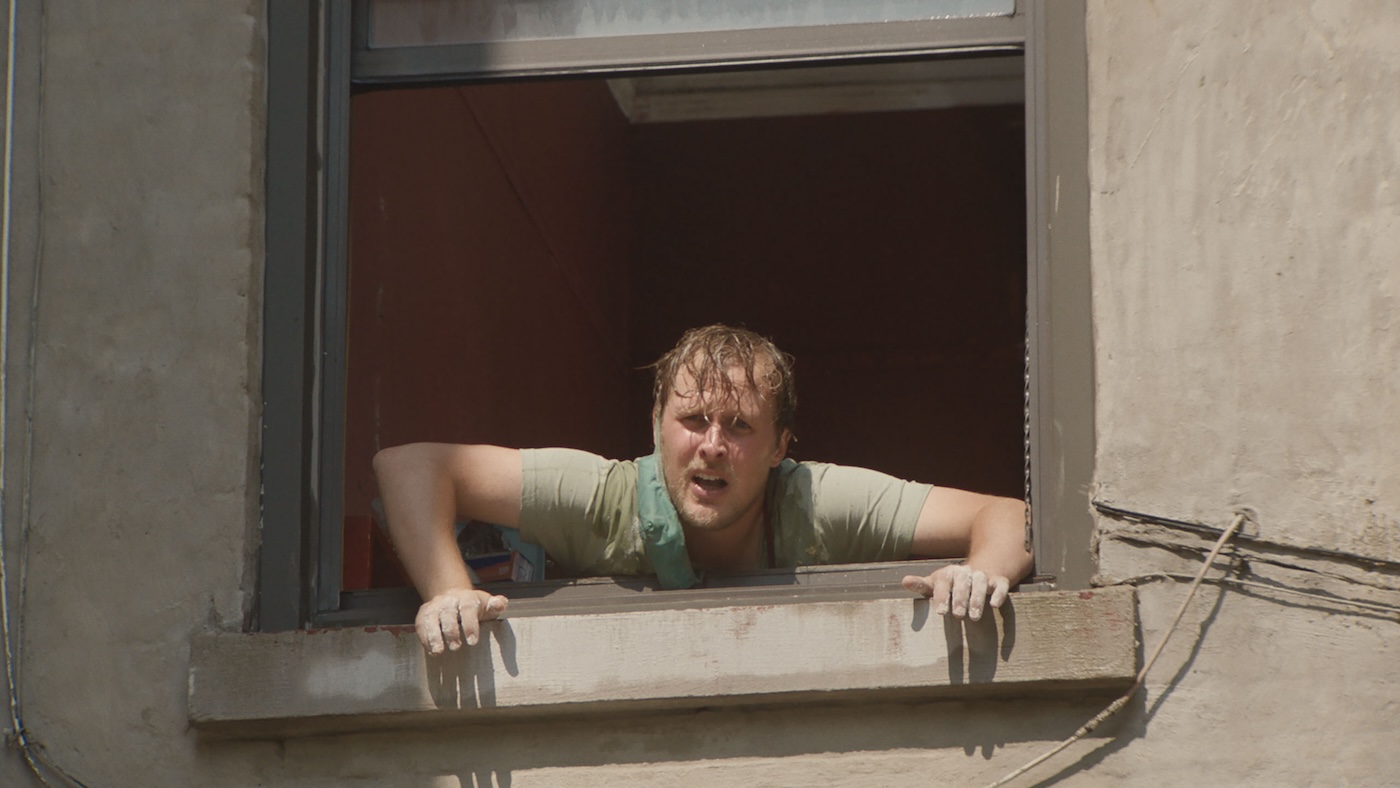
Stress Positions – Local 600 2nd AC Arlene Muller shot this debut feature for Writer/Director Theda Hammel, whose short film My Trip To Spain premiered at the 2022 Sundance Film Festival. John Early stars as Terry, who’s keeping strict quarantine in his ex-husband’s Brooklyn brownstone while caring for his nephew – a 19-year-old model from Morocco named Bahlul who is bedridden in a full leg cast after an electric scooter accident. Unfortunately for Terry, everyone in his life wants to meet the model. Muller, who was accompanied by Local 600 1st AC Justine Bertrand, describes the film as “unique, as we were working with a first-time feature director in Theda Hammel, and a pretty scrappy budget,” Muller reveals. “Theda made a great, quite genius decision in pre-production to shoot on ALEXA 35 with 16-millimeter Canon zoom lenses after we tested both 35- and 16-millimeter lenses on full sensor and the 16-millimeter crop. The ALEXA 35 gave us 2K on the 16-millimeter lenses, and the vintage Canon zooms we used gave us a softer, filmier look as well as allowing more flexibility for handheld shooting, since the whole camera package became so much lighter. We shot most of the film in one location, in and around a Brooklyn brownstone in Bedford Stuyvesant. Justine did an amazing job keeping us organized and in focus during the shoot. Our biggest challenges were scheduling and time, as it was an ambitious shoot with a fair amount of dialogue, sometimes with up to five or six people in a scene! I loved all my crew and had a great experience working with them; they were all so supportive, and we became great friends to boot.”
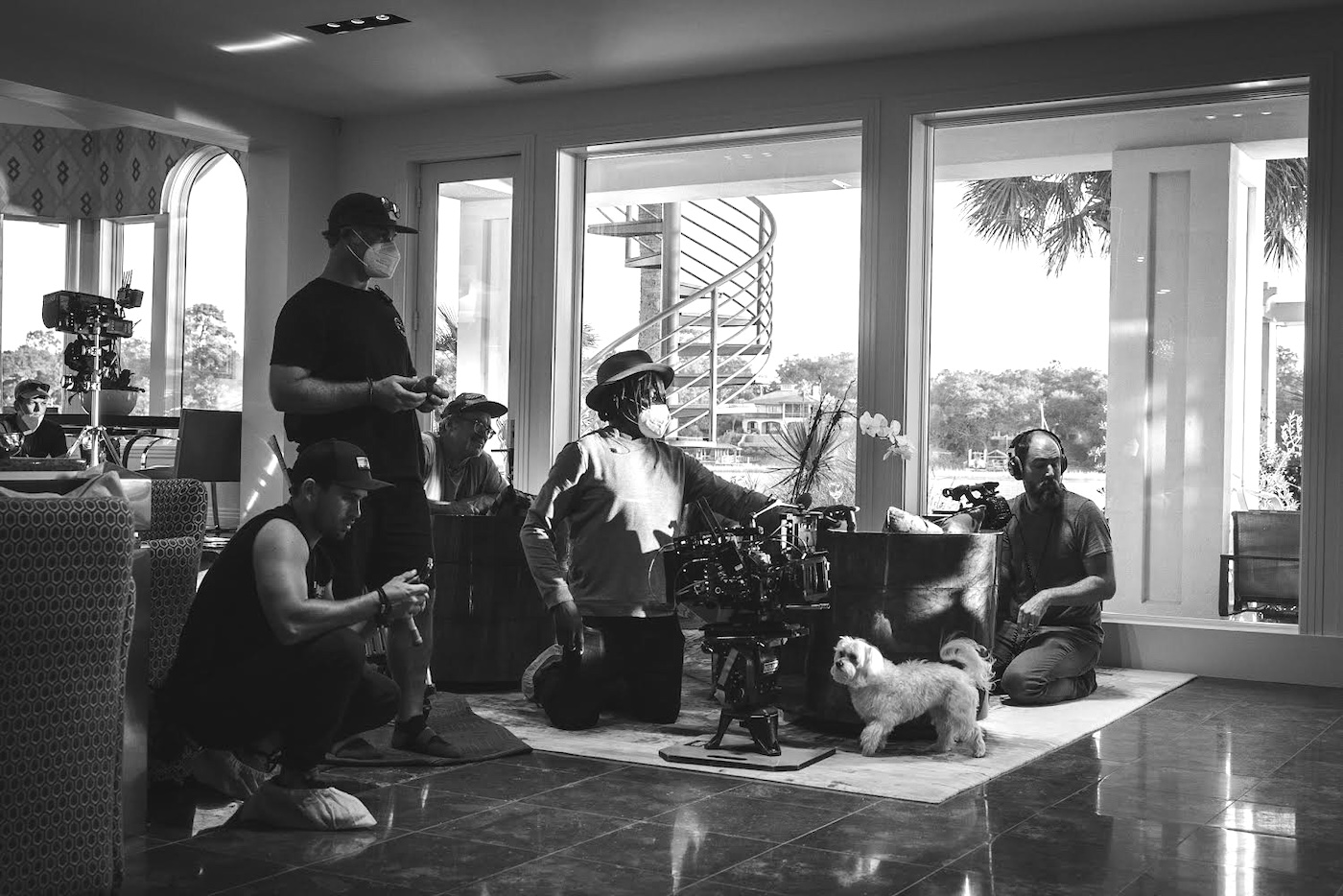 Suncoast lensed by Bruce Francis Cole / Photo by Eric Zachanowich
Suncoast lensed by Bruce Francis Cole / Photo by Eric Zachanowich
Suncoast – Local 600 Director of Photography Bruce Francis Cole shot this debut feature for Actor turned Writer/Director Laura Chinn (Florida Girls, The Mick, Grey’s Anatomy, My Name Is Earl, Happy Endings), inspired by Chinn’s teenage years in St. Petersburg, FL. The story centers on a teenager who, while caring for her brother along with her audacious mother, strikes up an unlikely friendship with an eccentric activist who is protesting one of the most landmark medical cases of all time. Cole says “working with a first-time director is always full of serendipitous moments and also its own set of challenges. The most important lesson I’ve learned is trust building. With Suncoast, Laura Chinn was very clear about getting out of the way of the story. We wanted the technique and visual language to disappear while at the same time allow her flexibility to build on certain aspects in post.”
Cole adds that he decided to “search for the truth in the lighting and spatiality of the locations we chose. This film deeply resonated with me because I spent a good amount of time in homes for the elderly, disabled and dying. I did this at a time when I was in between trying to figure out if I could still be a cinematographer or if I was going to have to find some other profession that would allow me to be close to my mother. I remember how light could transform the room of the patients from a feeling of abandonment to optimism. There’s something special about the early morning sun breaking through the windows of an empty room with an empty bed, or the comforting glow from a very warm lamp in a room where a patient is approaching death. We juxtaposed this mood with the innocence and carefree spirit of our main character, who is struggling to not let her youth escape her during her senior year in high school. Laura was also adamant about wanting texture and things to feel like a vintage postcard from Florida, so we chose to shoot on Sony VENICE 1 with a set of Hawk V-Lite anamorphics, allowing for the edges of the frame to take on more character, like the edges of a withered postcard.” Cole was joined by a full union camera team that included A-Camera/Steadicam Operator Chris Lymberis, B-Camera Operator Dirk Steyn, A-Camera 1st AC Dan Cooper, A-Camera 2nd AC Joe Thomas, B-Camera 1st AC Doug Tortorici, B-Camera 2nd AC Dorian Del Valle, Digital Imaging Technician Eric Ransbottom, and Unit Still Photographer Eric Zachanowich.
U.S. Documentary Competition
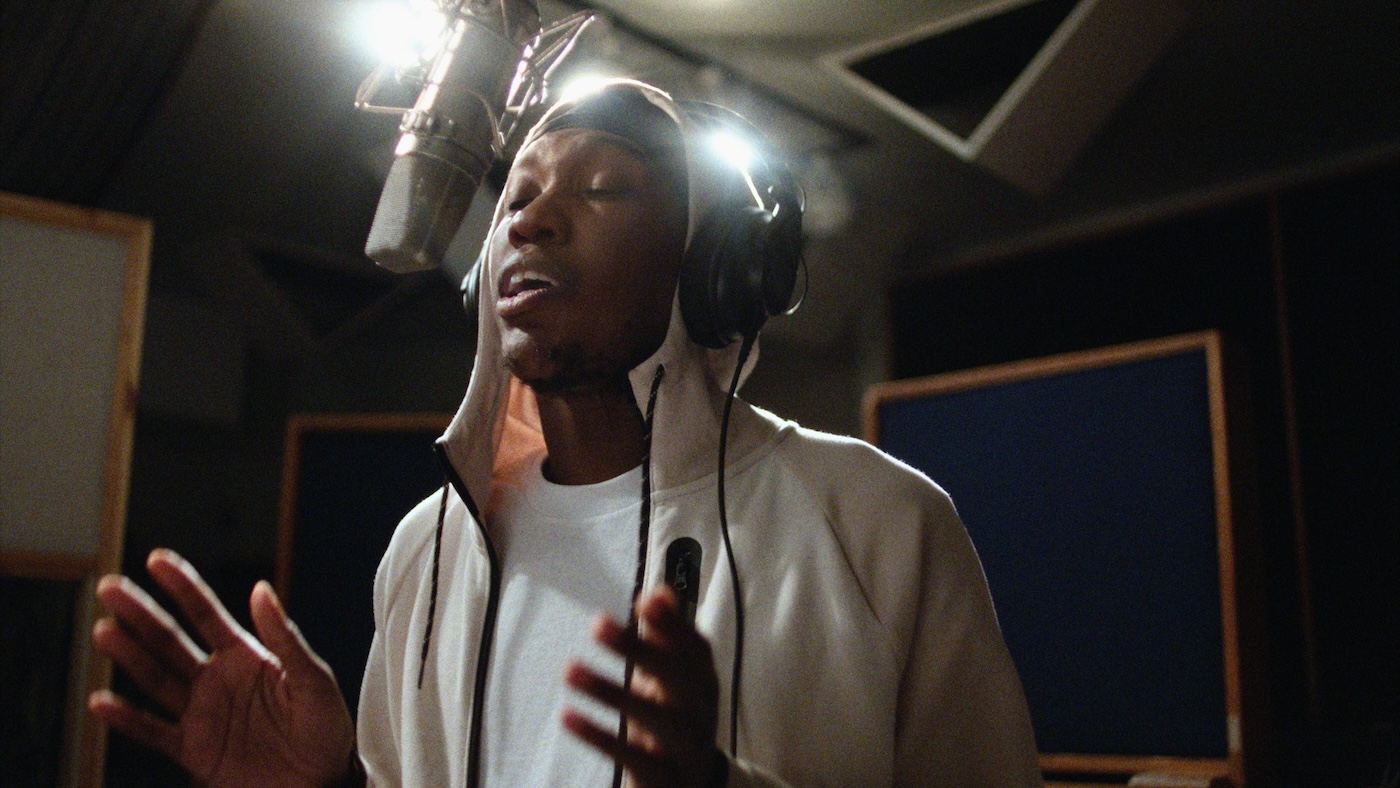
As We Speak – ICG Director of Photography Logan Triplett co-shot this film with his wife, Director of Photography Allison Anderson-Triplett, for Brooklyn-based Writer/Director J.M. Harper’s debut feature about Bronx rap artist Kemba, who explores the growing weaponization of rap lyrics in the United States criminal justice system and abroad – revealing how law enforcement has quietly used artistic creation as evidence in criminal cases for decades. The film shines a light on the intersection between the weaponization of rap lyrics and threats to freedom of speech. Harper guides viewers through the origins of gangster rap to drill, studies on racial bias in music, discussions with legal experts, and candid conversations with such influential artists as Killer Mike to reveal a profound history of targeting Black music and artists. The film transitions between interviews, animated sequences, and reenactments to reflect the interconnectedness of the issues at hand. Logan Triplett says Harper wanted each conversation that Kemba has to feel natural and cinematic. “Our vision was for the audience to forget that they were watching a documentary and [instead] feel like they were immersed in Kemba’s journey,” he shares. “Because it wasn’t scripted, we painstakingly planned and meticulously scouted – sometimes multiple – locations to determine the best blocking, camera angles and lighting that would best serve the purpose and characters present in each scene. On the day, we had already thoroughly talked through all of the different places that these conversations might go. This approach, along with JM’s ability to think on the fly, allowed us the flexibility to let the scenes go where they wanted to. We were then able to adapt our plan intuitively, when unexpected moments of magic would happen on camera.”

Daughters – Guild Director of Photography Michael “Cambio” Fernandez, who shot the Sundance 2023 premiere The Accidental Getaway Driver [ICG Magazine April 2023] and the Sundance 2022 Grand Jury Prize winner If I Go Will They Miss Me, used a vérité-style to lens this unique feature documentary for co-directors Natalie Rae and Angela Patton about four young girls, preparing for a special Daddy Daughter Dance with their fathers, who are incarcerated in a Washington, D.C., jail. As Aubrey, Santana, Raziah, and Ja’Ana get ready for the special event, they speak candidly about their hopes, dreams, and disappointments. Daughters challenges stereotypes around incarceration and serves as a poignant reminder that maintaining family bonds can be both healing and empowering. Fernandez says “shooting on film for the dance portion was probably a part of the film where I had to focus the most. We are shooting a documentary, so you only get one take to get everything, from exposure to camera movements, correct. We had to be there but also be soft and loving in our approach, since the moment between the fathers and daughters was so important. It took a long time of filming the families to get them comfortable with my proximity to them.”
NEXT
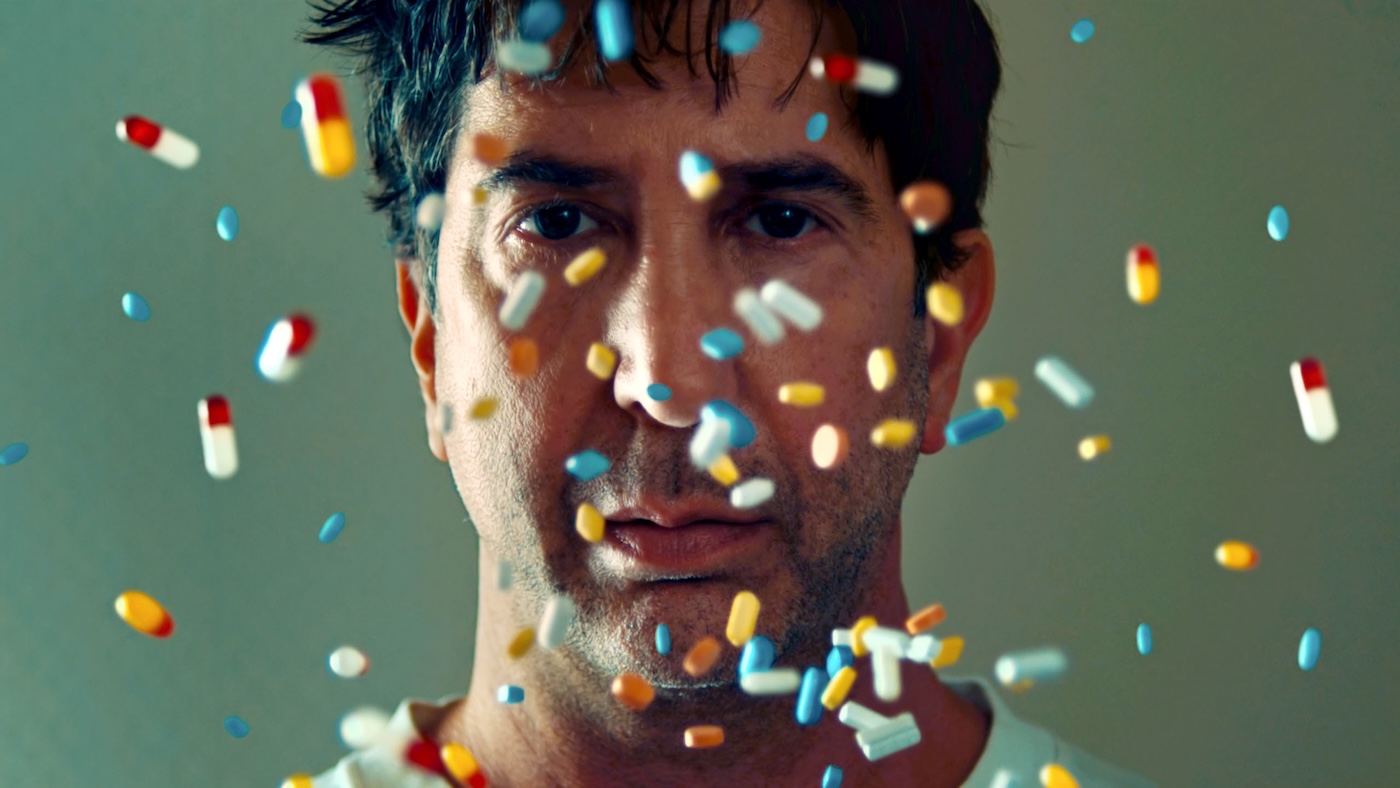
Little Death – Guild DP Christopher Ripley shot this dark comedy for acclaimed music video director Jack Begert (Kendrick Lamar, SZA, Dominic Fike, Olivia Rodrigo, Flying Lotus, Doja Cat) about a screenwriter’s (David Schwimmer) midlife identity crisis and a crime drama about a pair of taco truck entrepreneurs (Talia Ryder and Dominic Fike) in search of their next opioid fix. In true L.A. fashion, the characters collide at a tragicomic intersection as the film shifts tonal gears. Begert deploys disorienting bursts of surreal montage and oddball AI animation to convey Schwimmer’s fractured psyche. Ripley shares that “from the first day of prep, my director and I knew this film required two completely different looks shot on two different formats – ALEXA Mini LF and 3-perf 35 millimeter. In prep, at Camtec, we tested a wide range of lenses for each format. We wanted to see whether our lenses should make the transition between formats more subtle or even more extreme. We settled on the latter, using Zeiss B-Speeds to push our film look softer and reduce contrast, and ARRI Signature Primes (without diffusion) to keep our digital look very clean and sharp. We mirrored those choices with the zooms, using vintage Cooke zooms when shooting film and a clean Angénieux Optimo 12:1 when shooting digitally.”
Ripley says the strategy was similar for lighting. “We decided moments shot on film should feel a bit messier,” he continues, “so we lit those primarily with practicals and subtle augmentations. My gaffer, Mathias Peralta, and I built custom sodium and metal halide fixtures for night exterior work, and my key grip, Matt Planer, would neatly rig them on locations so they could appear in frame as convincing practicals. When we needed to use more typical film lighting, we designed it to mirror that happenstance available-light look, with a few small nudges here and there for emotion, tone, and sometimes just to sculpt a location that would otherwise be a bit too chaotic. We leaned hard into things that one wouldn’t normally do – like lighting a scene with low-CRI compact fluorescent and LED daylight bulbs in practicals to give it a twisted, oppressive quality.” Ripley says digital moments were lit to feel “significantly more heightened and stylized – soft, wrappy lighting with rich contrast, and larger sources,” he adds. “Sometimes we used large custom ring lights on stands or above the actors to refine the falloff of the light even more. Two completely different formats and two completely different workflows, all crammed into a 21-day shooting schedule. I’m so grateful to my AC’s for keeping things streamlined and creative while balancing the two formats, and to my A-Cam operator, Greg Arch, for being such a wonderful, level-headed artistic partner, even while we worked at breakneck speed.” The full Local 600 camera team included A-Camera/Steadicam Operator Greg Arch, SOC; A-Camera 1st AC Jacob Perry; A-Camera 2nd AC Joe Ashi;B-Camera 1st AC Eric Ugland; C-Camera 1st AC Brad Wilder; Film Loader Chastin Noblett; Digital Loader Savannah K. Quintanar; and Unit Still Photographer Tobin Yelland.
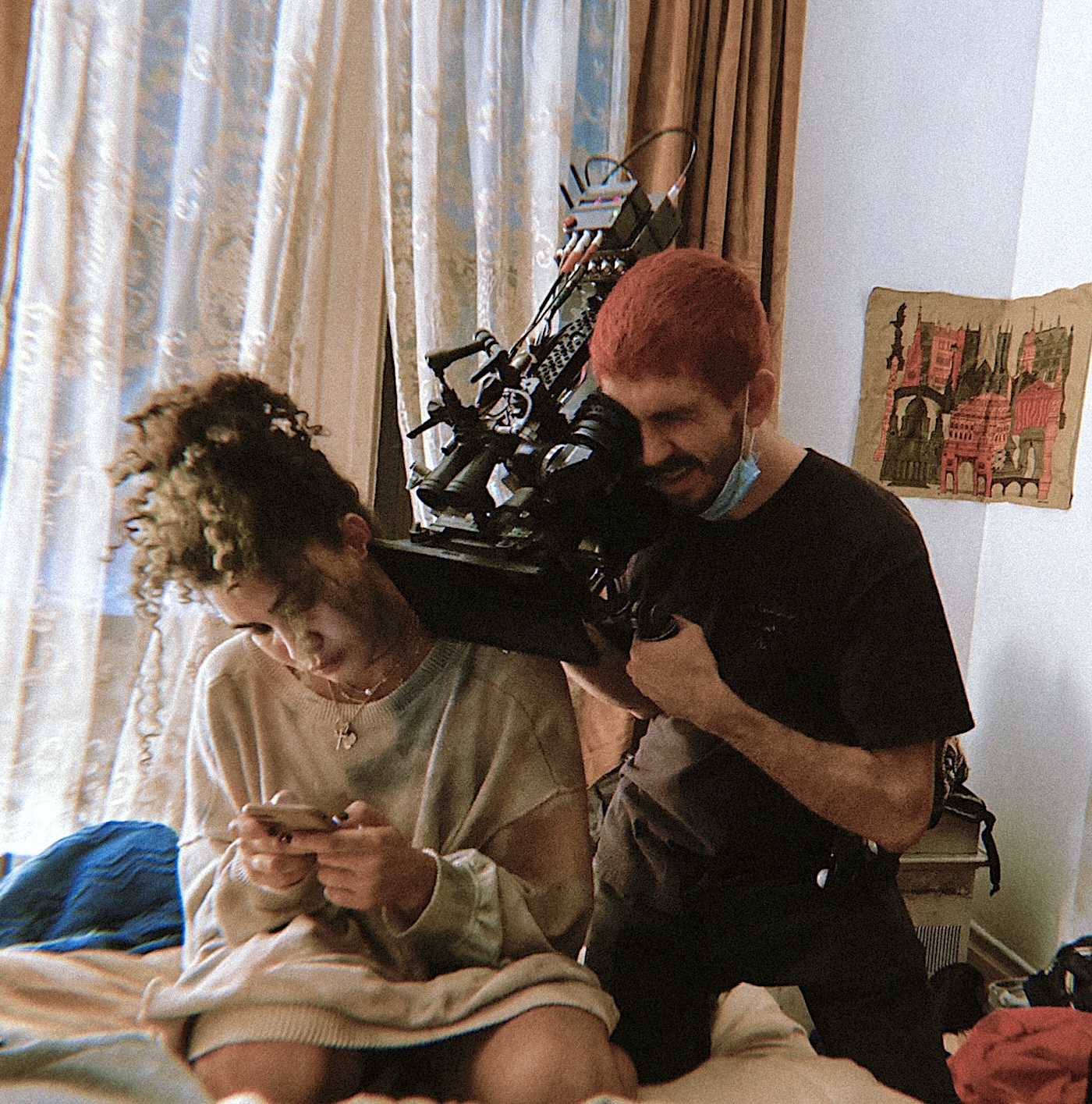
Tendaberry – Guild DP Matthew Ballard shot this debut feature for Writer/Director Haley Elizabeth Anderson about 23-year-old Dakota (Kota Johan), who must navigate life alone in New York City after her boyfriend returns to Ukraine to tend to his ailing father. The film’s elliptical narrative includes lyrical handheld cinematography, found footage, spectral home movies, and documentary digressions, to chart Dakota’s inner journey while also looking outward to craft an elegiac portrait of the city she calls home. Ballard says they shot Tendaberry on and off for over a year in order to shoot the changing seasons in New York. “It was a very small budget as well as a humble-sized crew, with some days being stripped down to only four of us,” Ballard recounts.
“The way that the director, Haley Elizabeth Anderson, made the seasons feel like poetry, is what initially drew me to the script. She made it clear that everything happening outside of and around the protagonist was an expression and a place to paint. It gave us the liberty and excitement to explore finding visceral elements and metaphors within the environment while also setting up a framework for asking thematic questions about how we relate to space and how we as a people are connected by going through seasons figuratively and literally together.”
Ballard says most of the film was shot handheld, with Anderson having “a very clear idea of how the energy of the camera should be throughout the film, and sometimes after a take we’d agree it needed more or less energy, and I’d have to get into a very focused frame of mind while operating,” he continues. “One of the most interesting parts was the discussions I had with Haley about exploring the kind of nature and transformation of the protagonist as it evolves through the film. What kinds of phenomena gravitate around her universe that reflect what she’s going through? What does she look at? What is she drawn to? What do we as filmmakers need to be tuned into as we’re shooting to really feel and express the tension, curiosity, and longing within her? We tried to plan a lot out, but often we were shooting in a run-and-gun way, finding things together. This led to such an open and intuitive way of filmmaking that was extremely rewarding.” Other Guild members on the shot included 1st AC’s Peter Westervelt, Tom Atwell, and Alex Dubois.
Premieres (Narrative and Documentary)
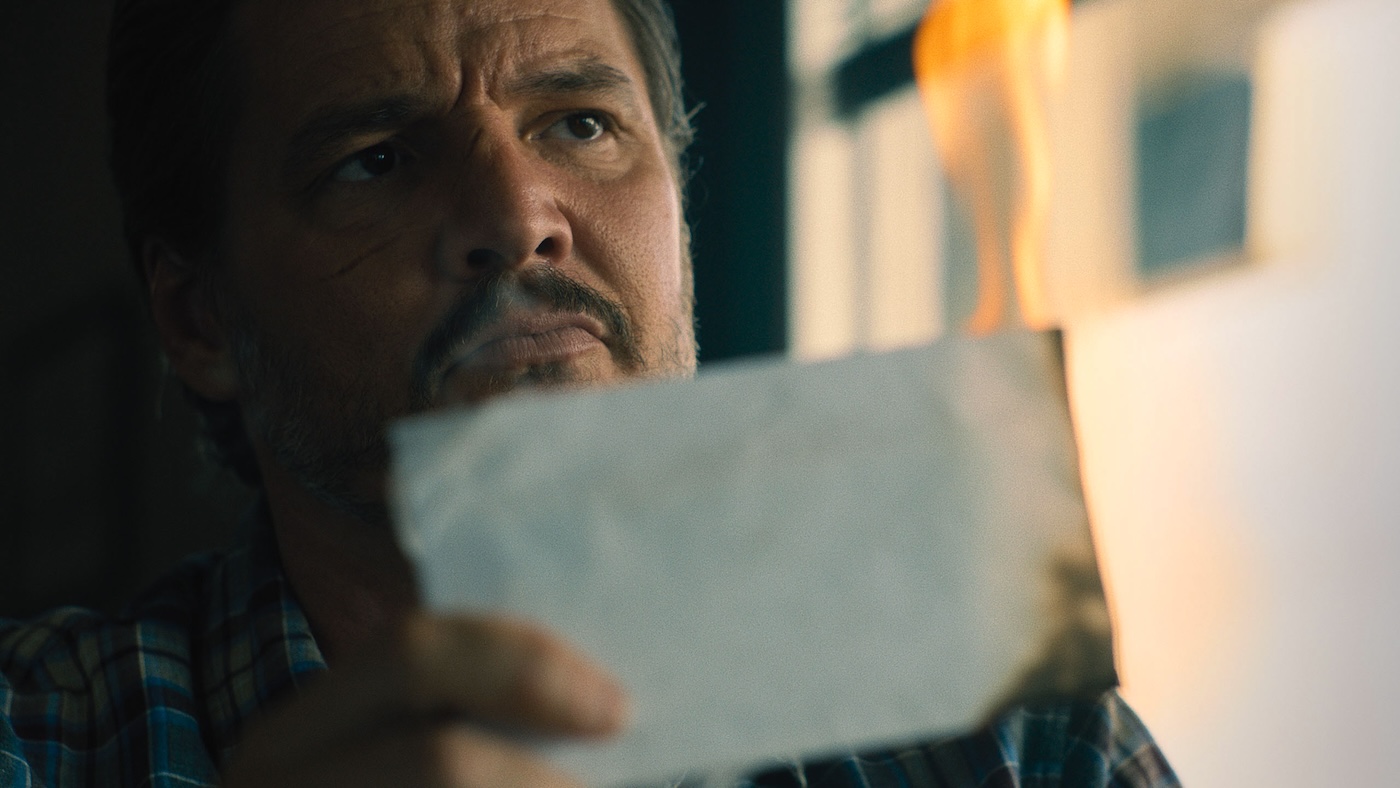
Freaky Tales – Jaqueline Fitzgerald shot this feature for acclaimed Sundance filmmakers Anna Boden and Ryan Fleck (Half Nelson, Sugar, It’s Kind of a Funny Story, Mississippi Grind). Set in Oakland, CA in 1987, a mysterious force guides the town’s underdogs in four interconnected tales: Teen punks defend their turf against Nazi skinheads, a rap duo battles for hip-hop immortality, a weary henchman gets a shot at redemption, and an NBA All-Star settles a score. The film’s visual style fuses everything from comic books and anthology horror to kung fu. The Sundance media site describes the film as “a stirring anthem to solidarity and Oakland’s egalitarian, countercultural, and multicultural spirit.” Fitzgerald says the narrative structure of the film “was unlike any other project I’ve worked on. Four separate chapters, four different groups of characters, four different looks. Our directors, Anna and Ryan, really wanted the project to be bold in the visuals, and we worked hard to create ‘stand alone’ looks for each chapter. Adding to the challenge was that the film was set in 1987, so we decided not to use any lenses that were made after that year. Bob Foertsch at Panavision was incredibly generous in supplying four different lens packages to help us achieve this,” Fitzgerald adds. “Changing lenses and formats constantly kept the camera crew busy, and they were excited for the challenge. Our grader, Tony Dustin at Company 3 Toronto, also did a great job of bringing all the different looks into a place where it all fits together, making the four chapters all feel like they belong together as one film!” Joining Fitzgerald was a full ICG crew that included A-Camera/Steadicam Operator Ross Coscia, A-Camera 1st AC Patrick McArdle, A-Camera 2nd AC Shannon Bringham, B-Camera Operator Stephen Buckingham, B-Camera 1st AC’s Tim Guffin and Aaron Kirby, B-Camera 2nd AC William Daeuel, 2nd Unit Director of Photography Steve Condiotti, AC (Phantom Camera Technician) Tom Heigl, Unit Still Photographer David Moir and Unit Publicist Wendi Laski.
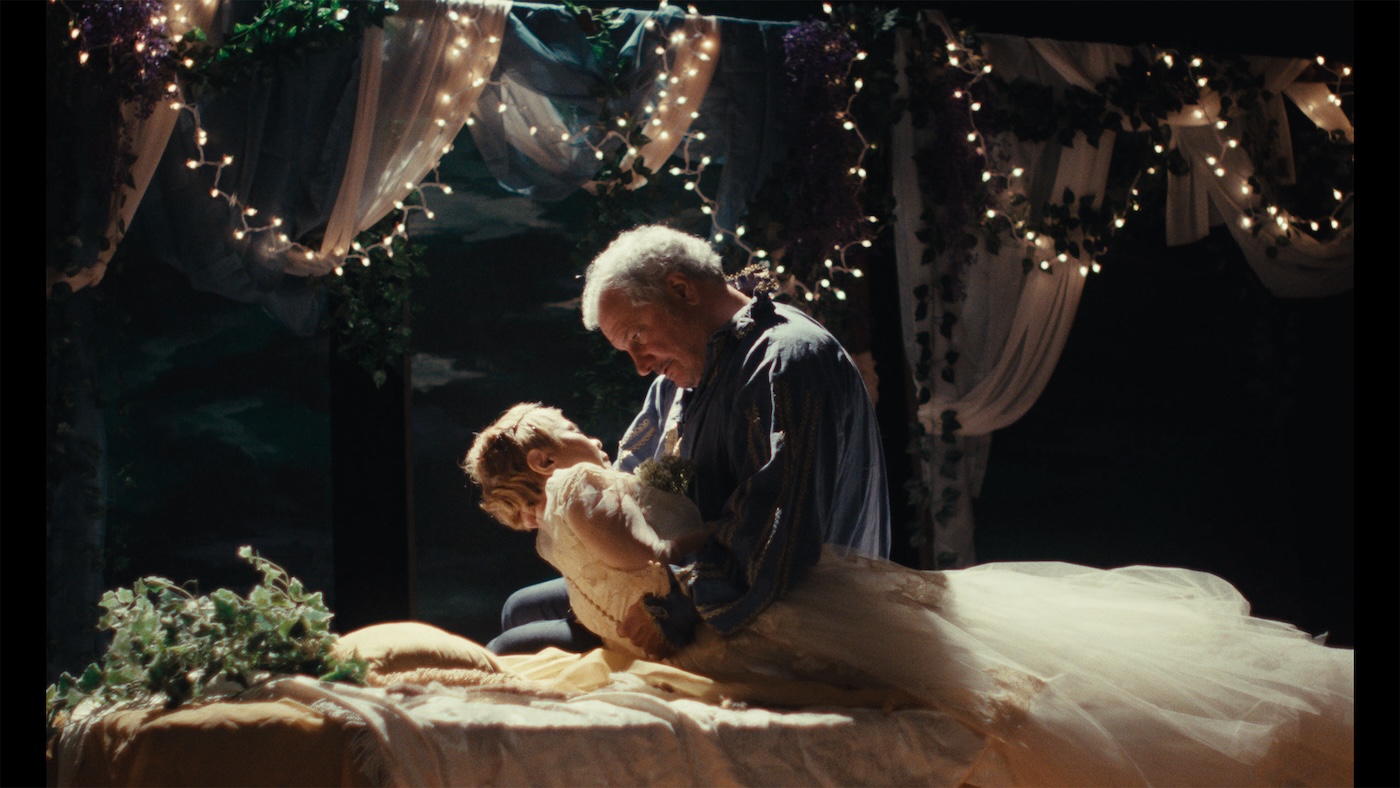
Ghostlight – Local 600 Operator Luke Dyra lensed this gently comic tale about a construction worker who joins a local theater production of Romeo and Juliet, with onstage events merging and forcing him to confront his issues within his offstage family. Dan (Keith Kupferer) is a melancholic middle-aged man grieving a family tragedy. Cut off from his devoted wife, Sharon (Tara Mallen), and talented but troubled daughter, Daisy (Katherine Mallen Kupferer), he finds comfort and community in a misfit company of amateur actors. Dyra says, “We really sought to bridge the gap between stage and screen. Often, what works for one doesn’t quite translate to the other, and we wanted to honor what it feels like to be an actor. [Co-Director] Kelly O’Sullivan, along with Alex Thompson, toe the line between comedy and tragedy by embracing a sense of naturalism.”
Dyra adds that the film needed “to feel real and grounded, so we looked at a number of verité references and came up with a visual style that shifts between subjective and objective points of view, catching small moments of levity and playfulness that punctuate the drama. It was paramount to leave space for discovery, which meant that my team had to be mindful about our process. My gaffer, Sammy Hochberg, and I worked closely to light as efficiently as possible so that we could maximize flexibility and stay in the emotion of the scene as we moved in for coverage. It wouldn’t have been possible without our 1st AC’s, [Guild members] Joe Tello and Ron Ruanphae, who worked tirelessly with limited rehearsals, shifting marks, and f-stops as low as T1.” Ghostlight was shot on ALEXA 35 with Panavision Ultra Speeds and Primo Zooms, generously provided by Panavision Chicago. “The ALEXA 35 gave us the flexibility we needed with such a small crew and limited budget,” Dyra concludes. “Pairing it with the Ultra Speeds gave us an image that I think feels set out of time, nostalgic and unembellished. Alex had the idea to shoot a 1.66 aspect ratio, and I think it was a perfect choice in creating our own proscenium.”
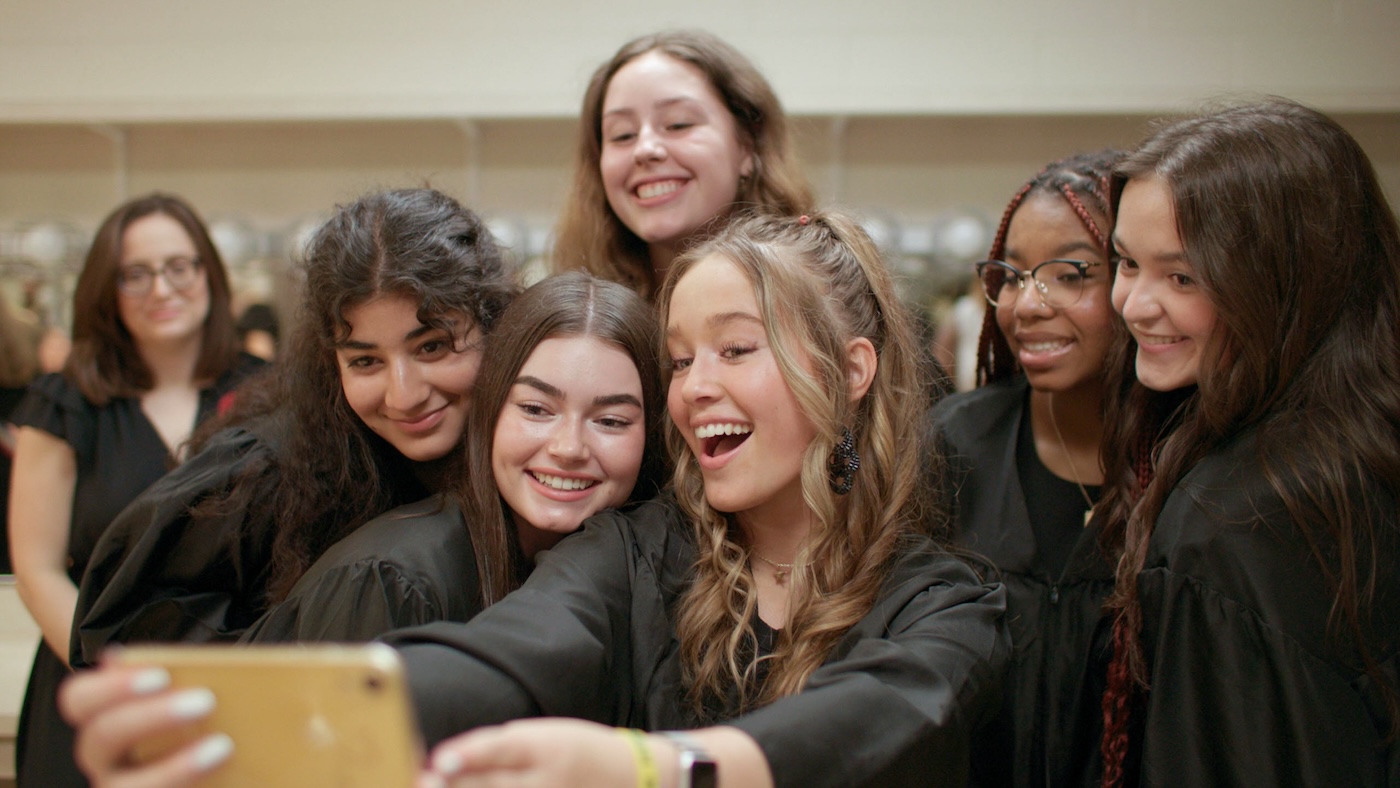
Girls State – Sundance veteran Laela Kilbourn [ICG Magazine December 2017] was one of seven cinematographers documenting the life of teenage girls from wildly different backgrounds across Missouri who navigate a week-long immersive experiment in American democracy. Co-Directors Amanda McBaine and Jesse Moss’s return to the world of teenage-led politics follows ambitions unfolding as hundreds of teenage girls gather to build a representative government in Missouri during a session of Girls State co-hosted alongside Boys State. As the girls run for office, including governor and Supreme Court seats, they also methodically preside over a reproductive-rights case while the real-life overturning of Roe v. Wade hangs in the balance. McBaine and Moss stay embedded in Girls State, following several charismatic candidates, but these aspiring change-makers keenly take note of the Boys State program and the differences between the programs. Kilbourn says the project was unusual in that “all seven DP’s were working simultaneously but also independently – each of us DP’s following a different girl for the course of the shoot, so we had seven crews filming all the time,” she recounts. Joining Kilbourn were Local 600 DP’s Thorsten Thielow, Erynn Patrick Lamont, and Laura Hudock, along with Local 600 AC Andrew Parrotte.
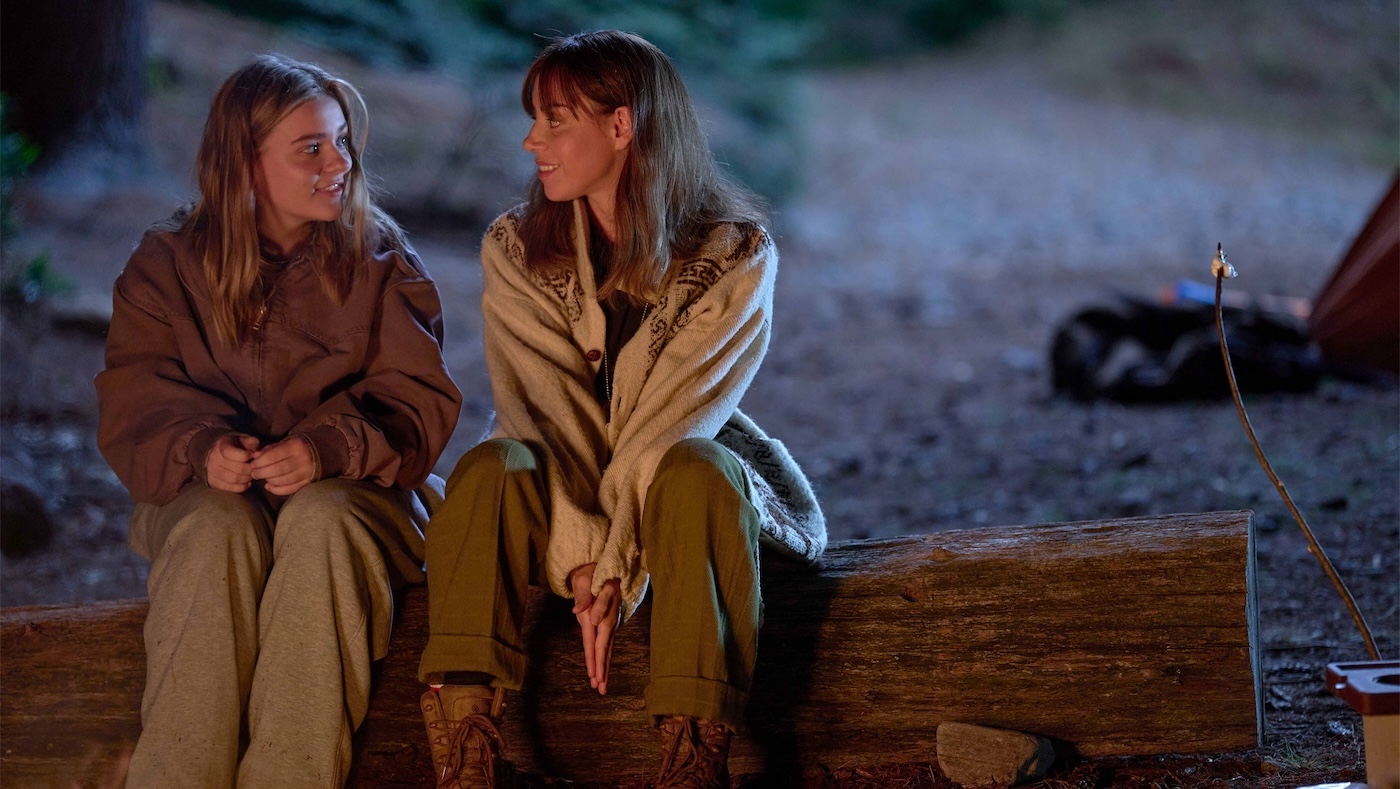
My Old Ass – ICG Western Region Operator Kristin Correll lensed this clever sophomore feature from Writer/Director Megan Park about Elliott, a bright and irreverent high school graduate coming face-to-face with her older self (Aubrey Plaza) during a trip on mushrooms. The encounter spurs a funny and heartfelt journey of self-discovery and first love as Elliott prepares to leave her childhood home for college.
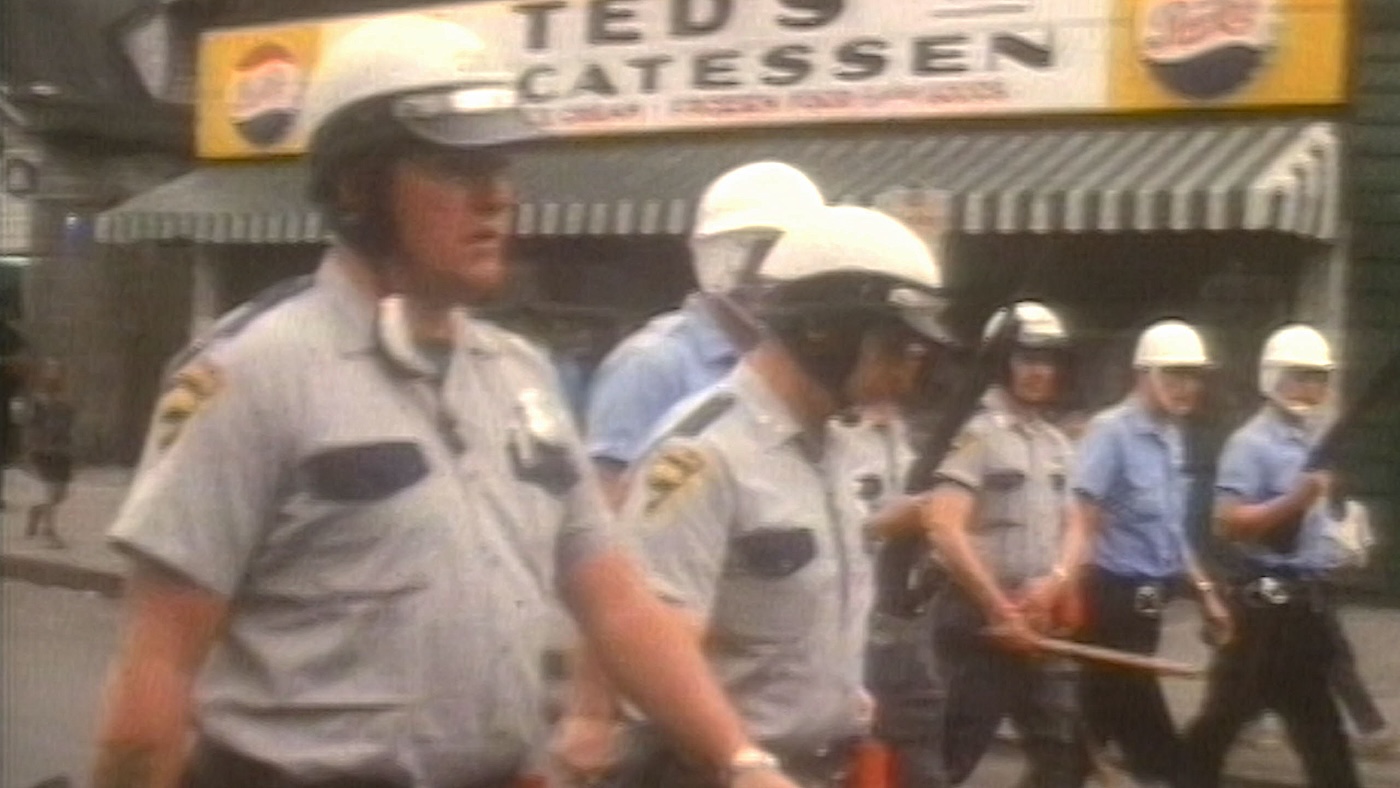
Power – ICG Eastern Region Operator Julia Liu shot this compelling documentary for filmmaker Yance Ford (Strong Island, U.S. Documentary Special Jury Award for Storytelling, 2017 Sundance Film Festival) about the nature of policing to maintain social order. Power is a sweeping chronicle of the history and evolution of policing in the U.S., arguing that the perceived danger of race to the status quo is central to the origins of policing and to its unchecked expansion. Liu describes the film as a “talking-head-heavy documentary, which always poses the challenge of how to build an interesting background for the subject. Yance Ford wanted backgrounds that had organic textures, colors and shapes, and we achieved that by building these physically, rather than using green screen, projection, or an LED wall,” Liu shares. “To achieve this, we built a screen of clear Coroplast behind the subjects to diffuse the background. Behind the coroplast we built a jungle gym of black and white showcards cut into different shapes and sizes, C-stands, and Titan tubes to create those organic shapes, colors and light. This was very satisfying work, and much more fun to create a 3D background for each interview rather than your average 2D backdrop.”
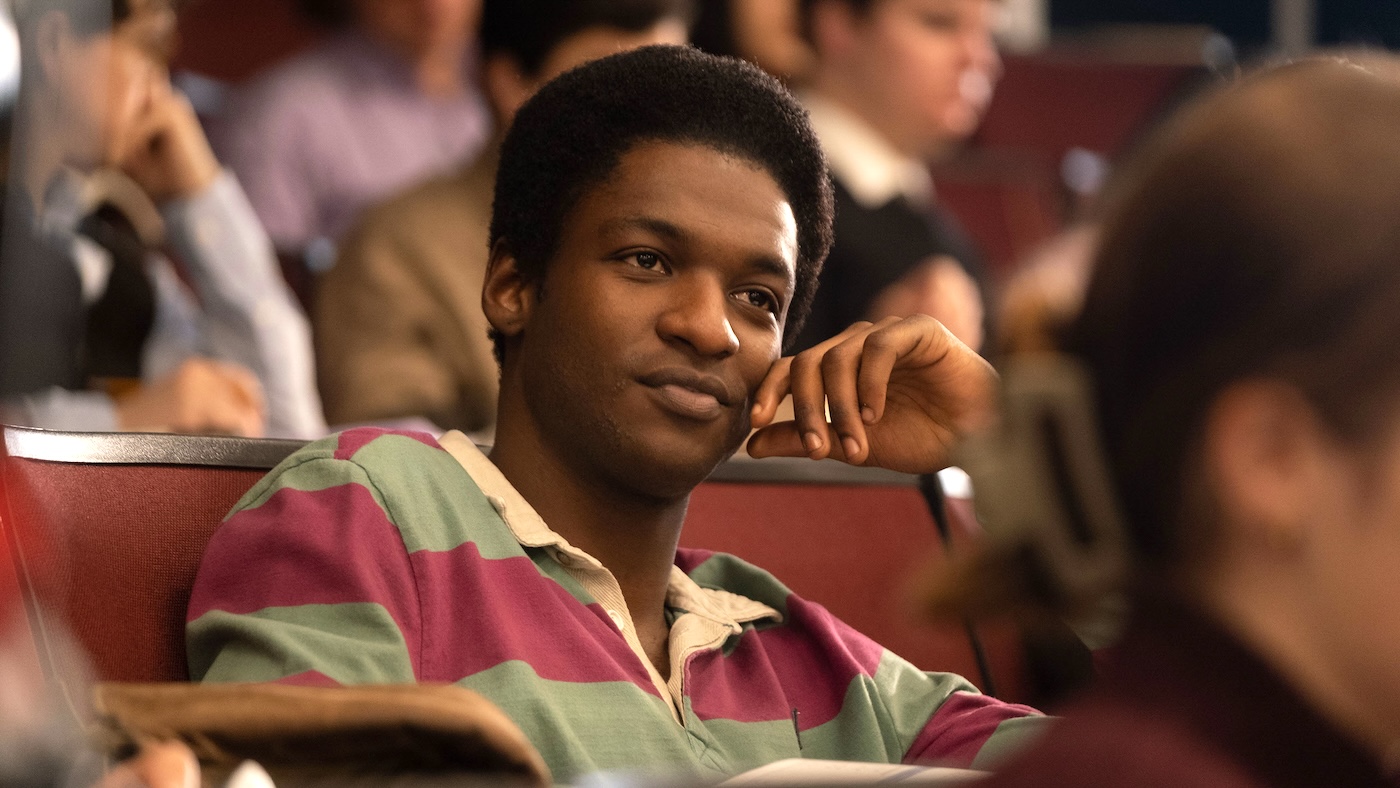
Rob Peace – Guild Director of Photography Ksenia Sereda shot this true-life story based on the book by Jeff Hobbs about a Black man who grew up in an impoverished section of Newark and later graduated from Yale with degrees in molecular biophysics and biochemistry, all while leading a dual life as a marijuana dealer. Written and directed by Oscar-nominated actor Chiwetel Ejiofor (who plays Peace’s incarcerated father) and produced by Antoine Fuqua, the movie portrays Peace (Jay Will) as intellectually curious and restlessly entrepreneurial – tenaciously working in a university research lab while secretly raising cash for his dad’s defense. The film explores the double bind between being true to one’s dreams and faithful to one’s roots, exposing the contradictions in the American dream for young Black men. Shot on location in New York City and New Jersey, with a Guild crew that included A-Camera/Steadicam Operator Alan Mehlbrech, A-Camera 1st Acs John Larson and Sebastian Almeida, A-Camera 2nd AC Martin Lucero, B-Camera 1st AC Stacy Mize, C-Camera Operator Jonathan Beck, C-Camera 1st AC Aaron Snow, DITs Peter Simonowicz and Guillermo Tunon, Underwater Director of Photography Pete Zuccarini, Underwater 1st AC Chris Seehase, and Unit Still Photographers Gwen Capistran and Aaron Ricketts.
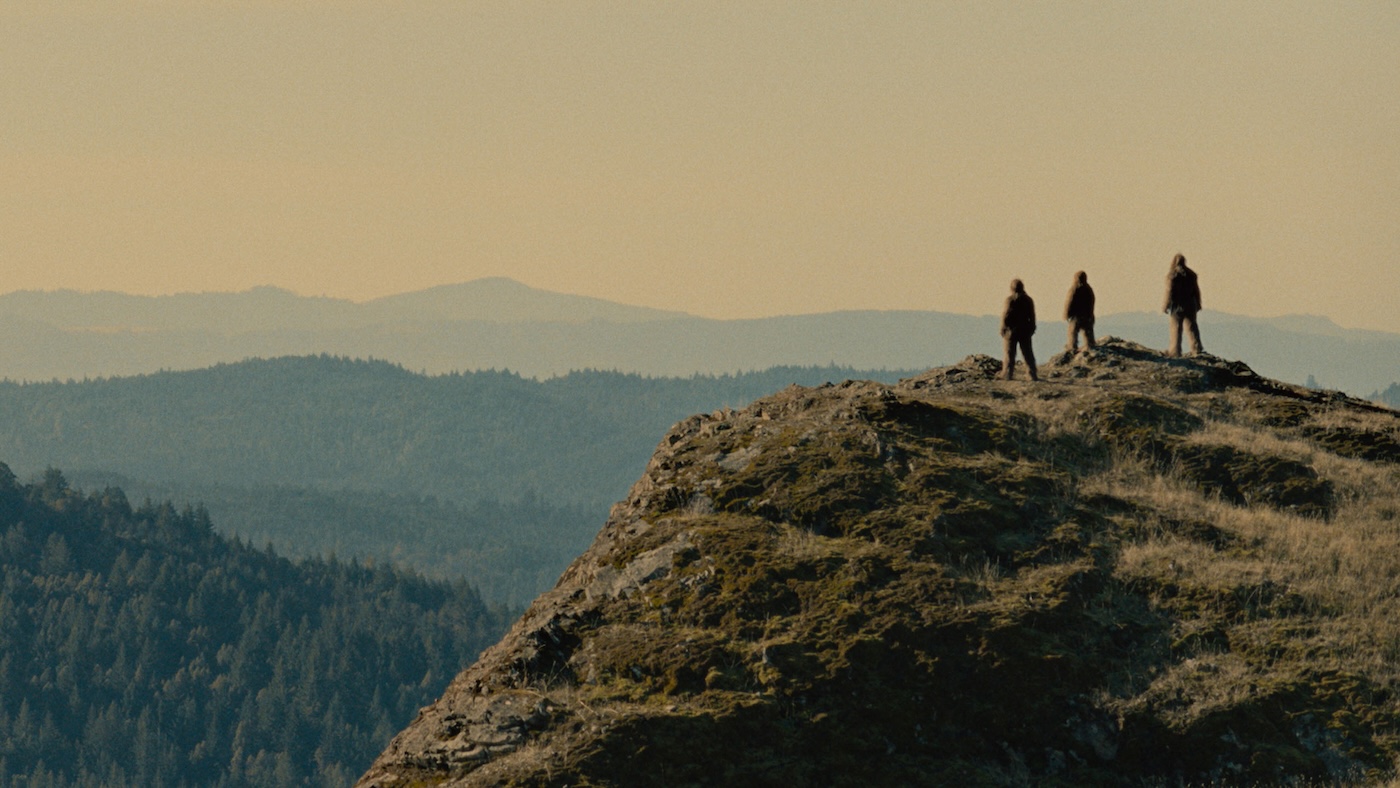
Sasquatch Sunset – It’s safe to say this latest feature from Sundance perennials David and Nathan Zellner is not like any other film in the festival this year. Lensed by Michael Gioulakis, ASC, with a full Guild camera team, the Zellner brothers’ latest film (past Sundance entries include Kid-Thing; Kumiko, the Treasure Hunter and Damsel) portrays the life of a sasquatch family with detail and rigor that is simply unforgettable. Jesse Eisenberg and Riley Keough offer ego-less performances, ranging across the Northwest in full sasquatch makeup.
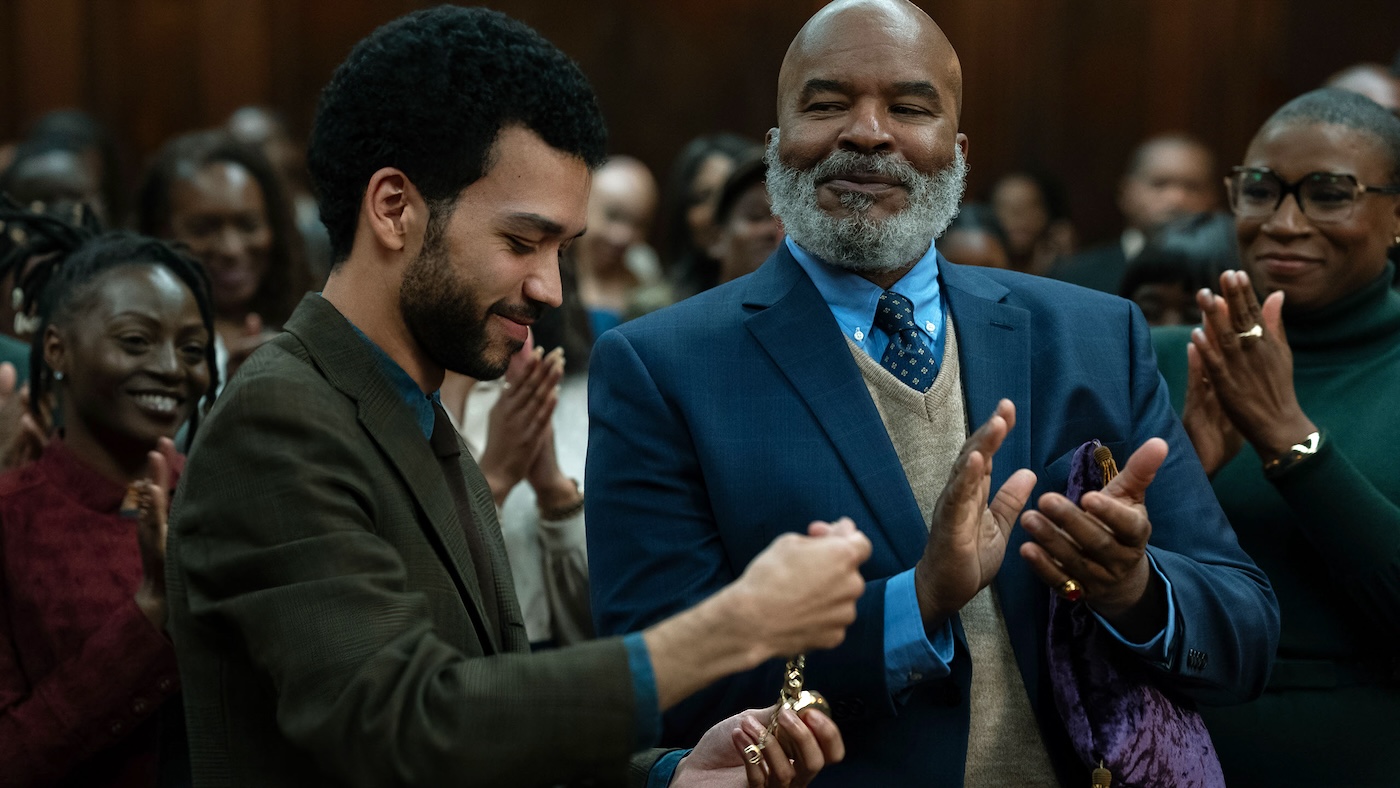
The Society of Magical Negroes – Sundance veteran Doug Emmett [ICG Magazine September 2017] returns to Park City with this romantic comedy/satire about the coming of age of a young Black man, who is propositioned to become a real-life Magical Negro upon narrowly escaping death after a string of racial microaggressions get out of hand. The term “Magical Negro” refers to a Black supporting character who exists solely to serve a white protagonist’s storyline and has been a stock character trope since the inception of American cinema. Emmett used the Sony VENICE paired with Blackwing lenses and was joined by Operator Joe Lindsay, 1st AC Buddy Allen Thomas and Unit Still Photographer Tobin Yelland.
Midnight
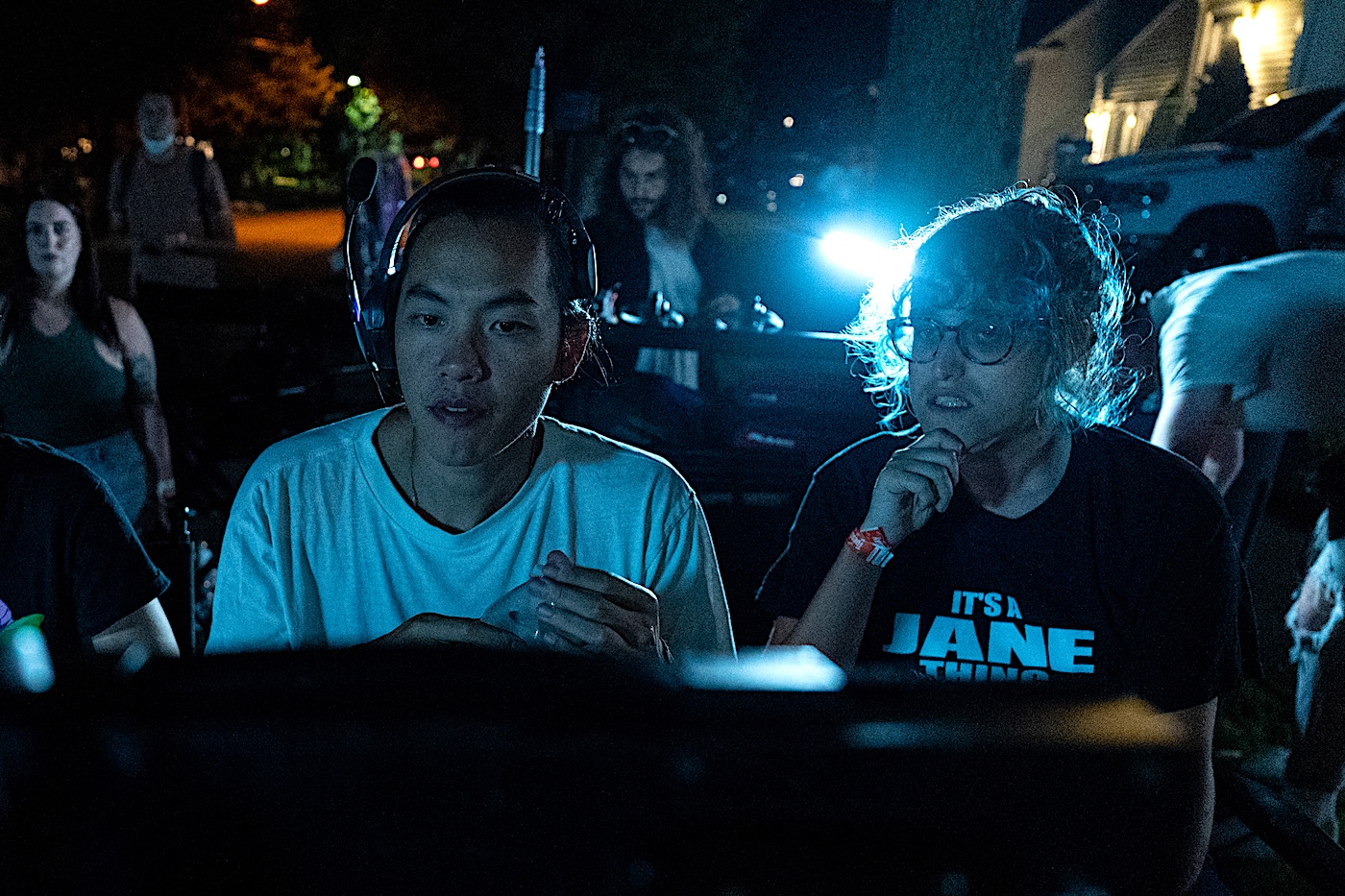
I Saw The TV Glow – Sundance alumnus Eric Yue [ICG Magazine April 2023] shot this adolescent horror tale from Jane Schoenbrun, a nonbinary filmmaker/writer dedicated to making and supporting personal, queer cinema. Teenager Owen (Justice Smith) is just trying to make it through life in the suburbs when his classmate (Brigette Lundy-Paine) introduces him to a mysterious late-night TV show – a vision of a supernatural world beneath their own. In the pale glow of the television, Owen’s view of reality begins to crack. Yue says he and Schoenbrun had spent “a significant amount of time before prep to develop the visual language of the film together. We had the space to dream and play, planning the architecture for the film quite early on, which is a rare privilege,” Yue shares. “Having that much time to develop a relationship with a director was quite special, as I felt like we were really crafting these images and sequences together. Working with 35 millimeter was also special, and I couldn’t have done it without my fantastic camera team. Joining Yue was a full Guild crew that included A-Camera Operator Sachi Bahra, Additional A-Camera Operators Rachel Batashvili and Zach Rubin, Steadicam Operator Kyle Parsons, A-Camera 1st AC Kali Riley, A-Camera 2nd AC Matt Cianfrani, additional 1st AC Rob Agulo, Loader Earl Davis, additional Loaders Phil Connor and Luna Burns, and Unit Still Photographer Spencer Pazer.
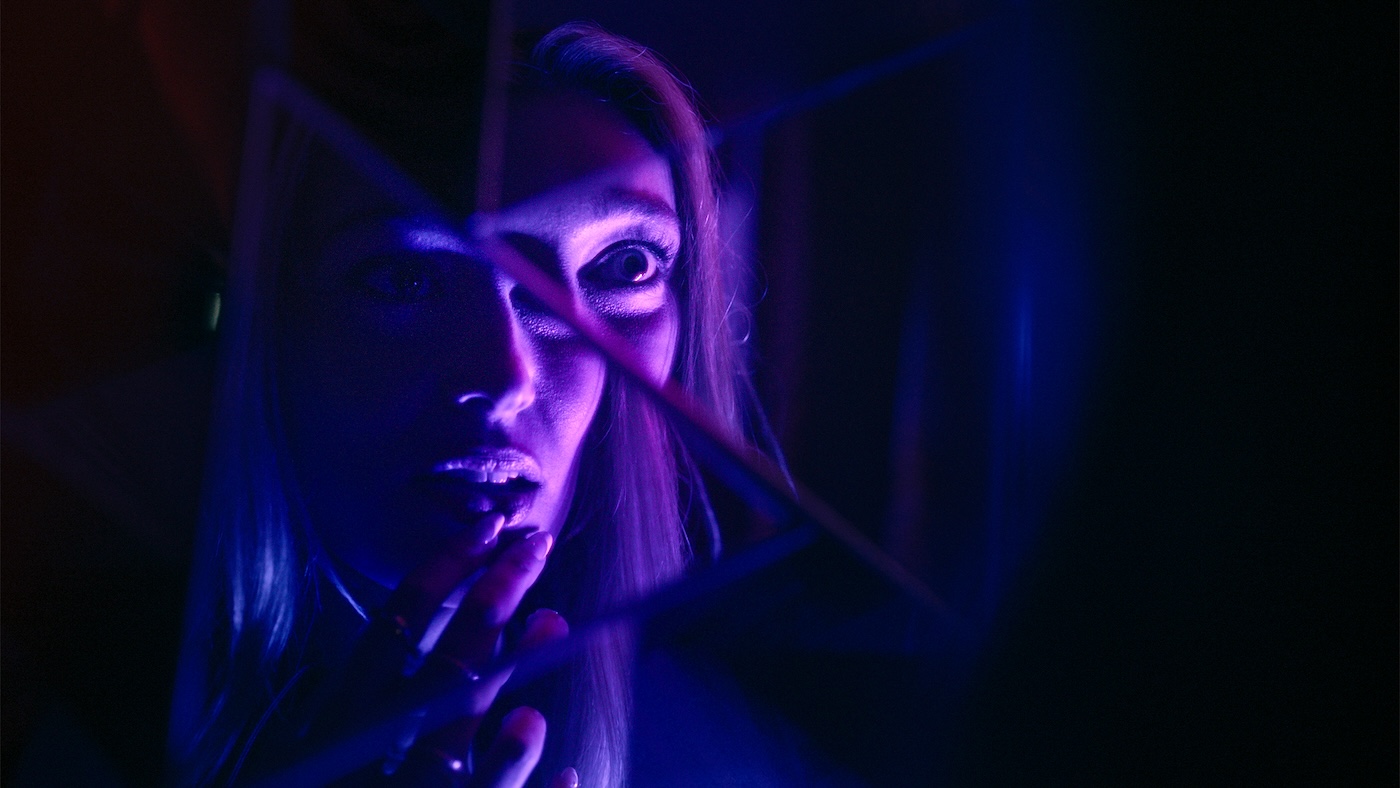
It’s What’s Inside – Guild Director of Photography Kevin “Fletch” Fletcher lensed this science-fiction-infused feature debut for Writer/Director Greg Jardin that plays like a twisted parlor game among a group of social media obsessives. Within the spirited party atmosphere, Jardin ratchets up the tension and thrills, cunningly deploying stylish expository clues so that audiences can marvel at the fast-paced plot twists without being left behind. Fletcher poses the question: “How do you shoot an imaginative, mind-bending, high-concept script without a studio-sized budget, on an 18-day schedule, and mostly at night? The answer is that I trust Greg. I have worked with him many times on short-form projects, so I knew that we would be approaching this intricate story with a lot of ingenuity. Greg always has conceptual designs in his brain long before a shoot – ideas about editing, movement, a particular technique, or even the music or sound of a scene – so in prep we spent as much time together as possible, to get inside each others’ minds and fuse our ideas,” Fletcher shares.
Even with limited prep time, Fletcher says he and Jardin were able to create a relatively concise breakdown of the script. “This meant that despite the 18-day schedule and the ambitious ideas, the crew was able to get our lighting and camera in place quickly and efficiently,” Fletcher adds. “Speaking of crew: this one was amazing. It doesn’t matter how good a director’s or DP’s idea is if it can’t be pulled off. It takes an entire team to execute. I owe a big debt of thanks to the grip, lighting, and camera teams for making it not only successful but enjoyable. The challenges of our somewhat unconventional shot designs seemed to fire imaginations and galvanize all of us in the storytelling. A shout-out as well goes to the production team, whose hard work made it happen, and to the cast, who embraced the lyricism of the script and the shooting style. The ARRI ALEXA 35 – with its great color science and low-light capabilities – paired with the Leica Summilux-C lenses was a great combination. I’m proud and honored to be a part of this film and to experience Sundance.” Joining Fletcher was a full union camera team that included Camera Operator Brian Freesh, 1st AC Kyril Cvetkov, 2nd AC’s Miguel De La Rosa and Peggy Knoebel, and DIT Sean Rawls. Second Unit Photography included DP Ryan Spacone, 1st AC Caitlin Brown and 2nd AC Travis Francis. Additional photography was provided by 1st AC Rob Monroy, 2nd AC Julio Zepeda and DIT Kyle Hollar.
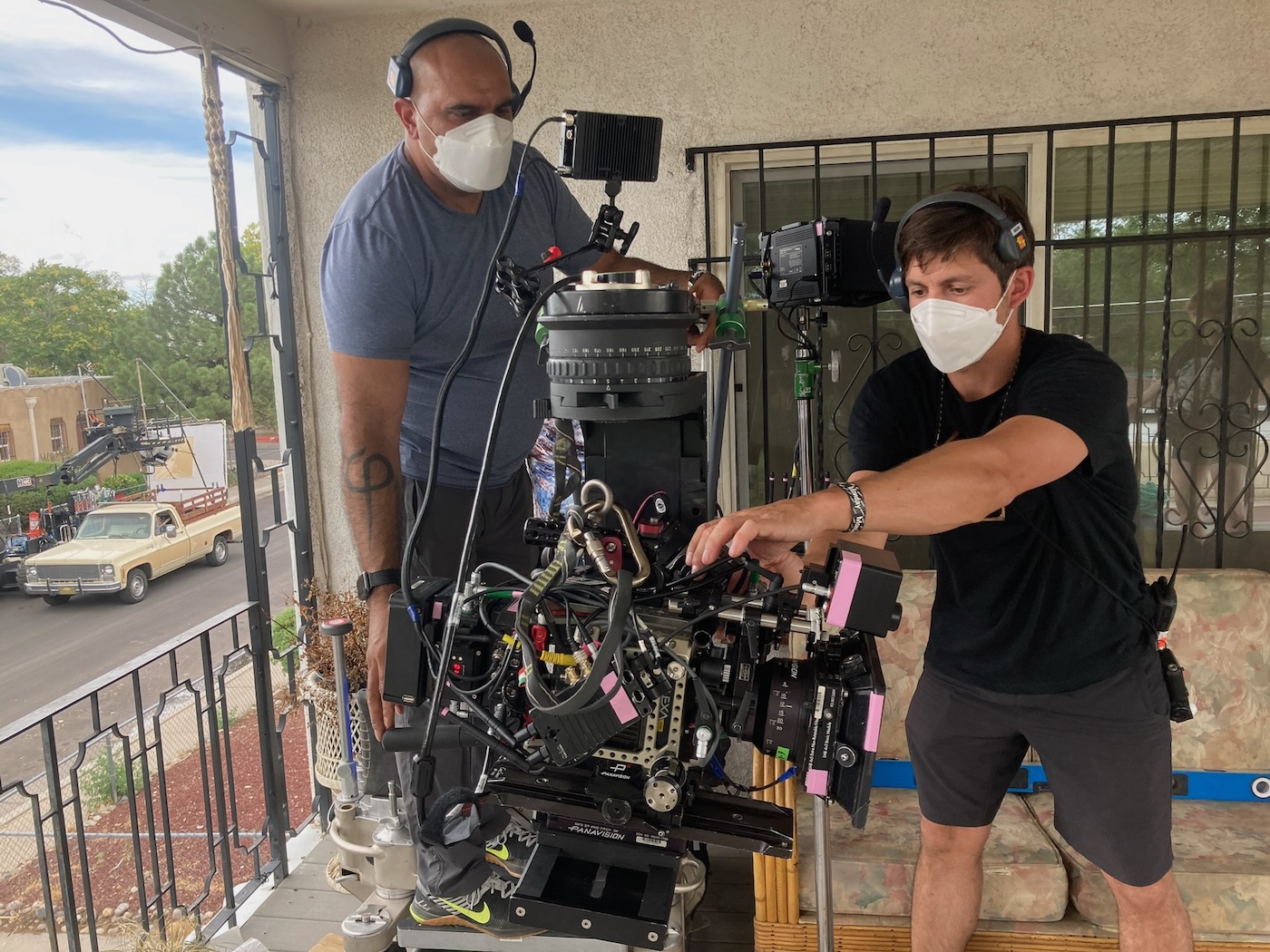
Love Lies Bleeding – ICG Director of Photography Ben Fordesman shot this family-drama-meets-lesbian-love-story about a reclusive gym manager (Sundance 2024 honoree Kristen Stewart) who falls hard for an ambitious bodybuilder (Katy O’Brian) headed through town to Las Vegas in pursuit of her dream. Their love ignites violence, pulling them deep into the web of the gym manager’s criminal family. Writer/Director Rose Glass makes her Sundance debut (after her BAFTA-nominated first feature, Saint Maud, premiered at the 2019 Toronto International Film Festival). The U.K.-born Fordesman says he’s been waiting to shoot the right feature in the U.S. for a long time. “Rose Glass co-wrote this brilliant script that is drenched in Americana while being set in the 1980s,” he describes. “So, clearly we needed some very visual locations. I was thrilled to hear we were shooting in New Mexico, which offered up everything we needed since the landscape and the roads that cut through played a big part of the story. Rose and I shot our debut film, Saint Maud, together in London, so I was excited to team up again in a new and epic landscape.”
Fordesman, who describes himself as “a Panavision guy,” found the company’s local office in Albuquerque “super helpful, as they shipped in a beautiful mix of Ultra Speeds, Super Speeds and PVintage optics,” he adds. “We shot throughthe middle of summer – the midday sun was harsh and not always the best quality of light to work with on camera, so planning around that was critical. Also, summer brings the storms in New Mexico, so we spent many afternoons waiting out the lightning! [Chief Lighting Technician] Jon McGinty and [A-Camera 1st AC] Karla Marie Christensen, whom I’d worked with before, joined us from L.A. for the seven-week shoot, and I was lucky to have an incredible local crew. Working in New Mexico was an unforgettable, incredible experience.” The ICG camera team included A-Camera Operator/Steadicam Twojay Dhillon, A-Camera 1st AC Karla Marie Christensen, DIT Tim Gregoire, B-Camera 1st AC Dan Baas, Utility Nate Martinez, Camera Operator Corey Weintraub, and Unit Still Photographer Ursula Coyote.
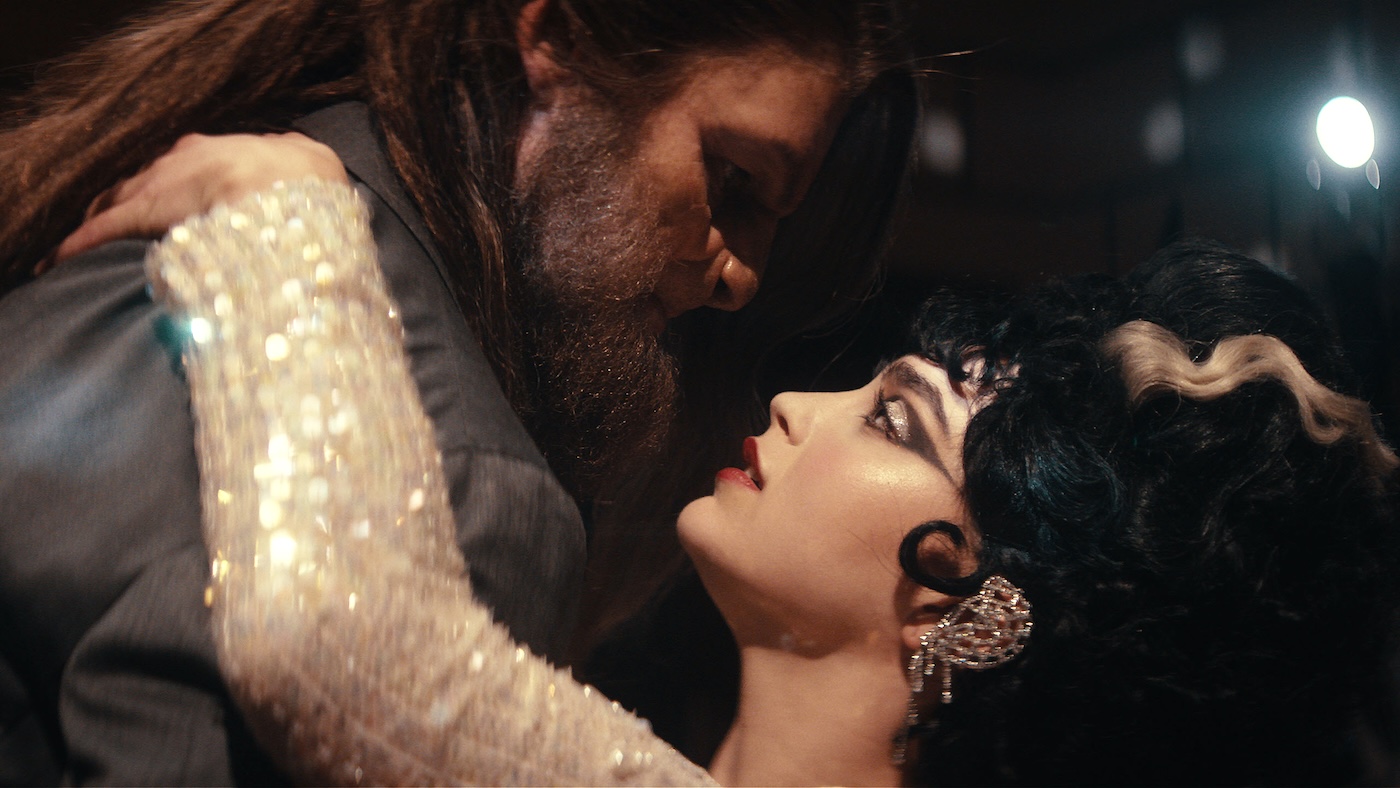
Your Monster – Director of Photography Will Stone shot this debut feature for writer/director Caroline Lindy about a soft-spoken actress (Melissa Barrera) who finds her voice again when she meets a terrifying yet weirdly charming monster (Tommy Dewey) living in her closet. Stone describes Your Monster as “an all-around amazing experience. It was my first time working with Caroline Lindy, and we instantly clicked. She’s so creative and hilarious and knows how to draw the absolute best from every scene. As soon as I read the script, which seamlessly blends romantic comedy, horror, suspense, Broadway musical, and fantasy, I knew I needed to be a part of this film.” Stone says he and Lindy discussed the cinematic language of film early on, “noting the challenges and pitfalls we may face when approaching such a genre-melding story,” he adds. “We determined that the script itself is inherently a romantic comedy, and knowing that the rom-com elements will always be there allowed us to feel comfortable with pushing the look more towards horror and suspense, so we could lean into the darkness within those genres. We didn’t have a ton of time or resources, yet we were able to achieve such an ambitious creative undertaking without sacrificing the story. Everyone involved brought everything they had and more. The New Jersey-shot feature also included ICG members Alex Flannery (Camera Operator) Briana Del Giorno (1st AC ) and Simon Floris (2nd AC).
Episodic
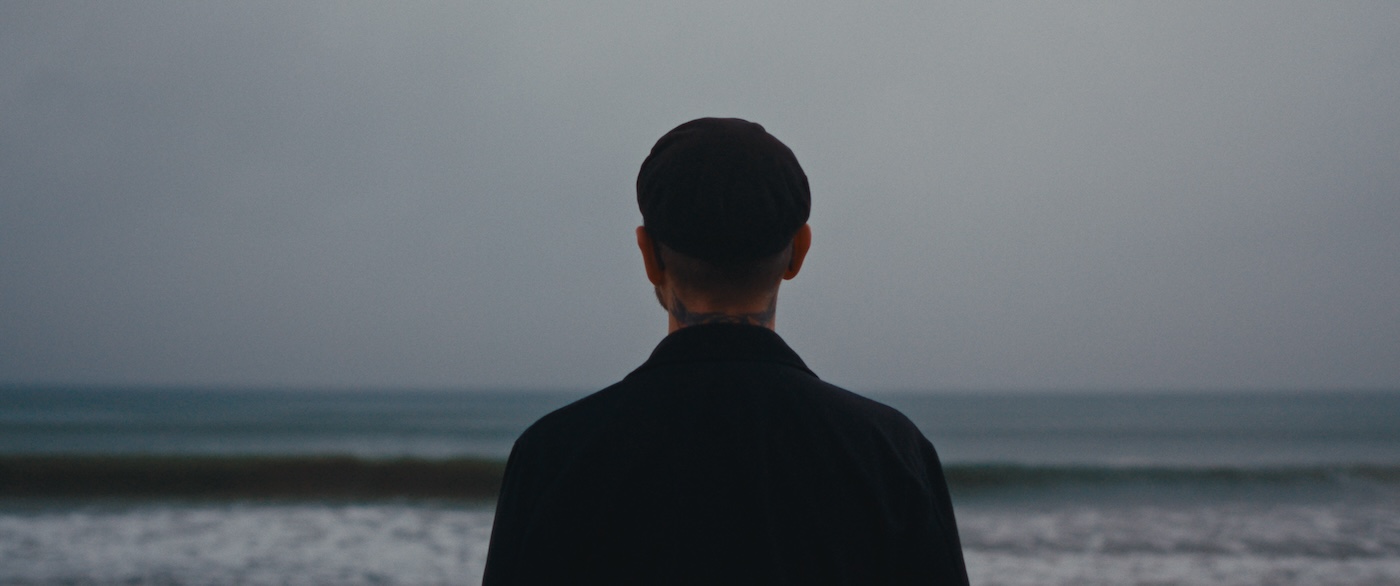
Better Angels: The Gospel According to Tammy Faye – ICG DP Justin Kane shot this four-part series by Oscar-nominated documentarian Dana Adam Shapiro (Murderball) about American icon Tammy Faye Messner. A larger-than-life personality who became a cultural touchstone, Messner’s many highs and lows were reflected in the political, religious and societal news of the day. Shapiro excavates private and historical artifacts to craft a profile that makes Tammy Faye the leading woman in her only-in-America true story. Kane says that when he and Shapiro first met, “we shared a mutual urge to push its visual language into fictional space – somewhere that could sweep us up into a cinematic fever-dream that supports a sense of mystery and betrayal, and a point of view that wasn’t fairly represented during the events in Tammy Faye Bakker’s life as they unfolded,” he shares.
Kane says Shapiro built a look-book made of images from dramatic thrillers mixed with archival photos that suddenly took on different meaning. “From there we began prep by selecting specific interview locations that could not only frame with depth or suit the lighting vibe,” Kane continues, “but could also fortify nuances of a story within the frame for each subject – anything from dread to lightness, or the integrity of power versus truth.” Working on a budget too tight to allow scouting for their interview and B-roll locations, Kane adds that “Production understood the importance of our sets acting as characters for our subjects to embody. We were super lucky for this, but the trade-off forced us to tighten up when it came to equipment. We also shot with two different sensor sizes full-time as A and B for interviews. Dana wanted to have both cameras be as close to eye-contact as possible, so with the help of great friends [and ICG members] 1st AC Andrew Goh and DIT’s Emilio Mejia and Emilie Collier, we experimented with pairing a S35 ALEXA Mini on a 50-millimeter through an EyeDirect, with a full-frame Sony FX6 squeezed directly below the EyeDirect on a 25-millimeteror 35-millimeter, depending on background. The final result delivers the appearance of eye contact and similar depth fall-off from both wide and close angles, so that it always feels like our subjects are telling us their own candid experience of Tammy. With these stories told alongside portraits and casual vérité moments with our lead subject, Jay Bakker, we aim to explore a deeper humanization of the universe that Tammy Faye endured and those that are left behind.”

God Save Texas: Hometown Prison – Huntsville, Texas sits at the heart of an expansive prison industrial complex. Yet, for many residents, these prisons exist in another realm, disconnected from their lives. Richard Linklater revisits his hometown to explore its diverse inhabitants, painting a vibrant portrait that encapsulates the criminal justice system of Texas. Guild DP Graham Willoughby was on board with Linklater for this first of three portraits of Texas, inspired by the book God Save Texas: A Journey Into the Soul of the Lone Star State by Lawrence Wright.
Penelope – Guild Director of Photography Nathan Miller shot this story, co-written by indie stalwarts Mark Duplass and Mel Eslyn, and directed and show-run by Eslyn, about 16-year-old Penelope (Megan Stott of Little Fires Everywhere), who, feeling out of place in the modern world. With no plan in place, she leaves her family behind for the beguiling wilderness where she begins to establish a different kind of life for herself. As she learns by necessity, survivalism coalesces with coming of age. Shot in the Pacific Northwest with a ICG team that included Operator June Zandona, 1st ACs Ryan Brown, Nick Kelling, and Jerry Turner, 2nd ACs Angela Bernardoni, Daniel Eddington, and Joseph Redding, Loader Nicole Heigh, and Unit Still Photographer Allyson Riggs.
Family Matinee
Out of My Mind – Local 600 Director of Photography Noah Greenberg shot this story for Director Amber Sealy (and Disney+), based on the popular novel by Sharon M. Draper, about a pivotal year in the life of Melody Brooks, a 12-year-old sixth-grader with cerebral palsy who is nonverbal. Melody finds herself isolated at school, where her outsized emotional maturity and intellectual prowess go unrecognized. At home, she is beloved but overprotected, experiencing a different but equally frustrating benign neglect. Her sixth-grade year brings a series of events that radically expand Melody’s experience and ability to communicate, and she is challenged to confront the complexities of both adolescence and the power of her own voice. The film stars and introduces Phoebe-Rae Taylor, a young British actor with cerebral palsy, as Melody. Greenberg says that “with some notable exceptions, my work has tended to be ‘darker’ visually than what you might expect for an uplifting young adult drama, as has Amber’s, both visually and conceptually. We would joke early on, wondering if anyone had really thought through pairing us up on a Disney+ project! But I think we’ve made a film that’s both visually sophisticated and narratively compelling. It’s appropriately moody and dark at times, but also suffused with a warm naturalism throughout that underpins the arc of the story and echoes the unvarnished examination of the more serious and universal underlying themes of the film.”
Greenberg says his lighting was mostly keyed from large, exterior sources used to mimic the delicate quality and falloff of window light. “These sources were modified and extended with mirrors, some smaller interior fixtures as needed, and practicals where possible,” he adds. “In addition to being elegant and naturalistic, this modality afforded the actors more room to explore the set and kept the ‘grip jungle’ to a minimum, which was essential for accommodating the mobility of an actor in a wheelchair.” Shooting in Toronto, Canada, with an all IATSE Local 667 Camera team, Greenberg paired ARRI’s ALEXA 65 and DNA 65 lenses for what he describes as “their texture and subtle, funky detuned look and gorgeous flares. The format’s shallow depth of field helped to separate Melody from her surroundings and underscore her isolation,” Greenberg explains. “Coverage always emphasized Melody’s perspective and direct experience throughout – with the camera mostly at her eye level and in Studio mode, save some handheld, Steadicam, and a few crane shots for sweep and context. I was lucky on this job to have such an amazing ‘film family,’ including a thoughtful, decisive, and collaborative director, tremendous cast, strong producers, talented grip and electric crews, and an exceptional camera team whose skill, patience, wit and warmth were a constant pleasure.” Joining Greenberg were A-Camera Operator/Steadicam Bradley Crosbie, SOC; B-Camera Operator Tim Merkel; additional B-Camera Operator (final week) François Daignault; A-Camera 1st AC Alex Leung; B-Camera 1st AC Curtis Ditmars; A-Camera 2nd AC Stephen Gould;B-Camera 2nd AC Maximilian Holt; Camera Utility Melissa Cifuentes; Camera Trainees Ryan Manankil and Kat Fedorova; DIT Yanick Champagne; DMT Charles Marcotte; Video Coordinator Victor Jolic; Assistant Video Coordinator Gabriel Rougeau; and Unit Still Photographer Michael Gibson.
U.S. Shorts

Flail – This live-action/screenlife hybrid comedy short was written by Ben Gauthier and Allie Levitan. The film follows a distracted personal assistant, frantically preparing for her boss’s birthday party through a blur of gridlocked parking garages and fast-casual salad chains. She’s on a desperate quest to achieve the one simple thing she initially set out to do. Local 600 member Brody Anderson, who DP’d the film, describes the project as a “a scrappy little movie, and we are so happy it’s reaching an enthusiastic audience.” Anderson says the small production team consisted of “Local 600 Camera Operator Hao Yu working as the 1st AC and Local 600 2nd AC Eric Wann working as our Gaffer. With 15 company moves spread over two weekends, we relied on an ALEXA Mini and Zeiss Super Speeds to help keep us on schedule.”
